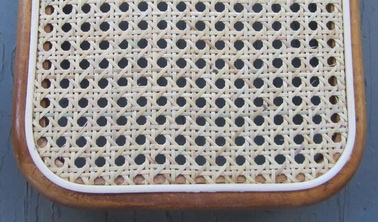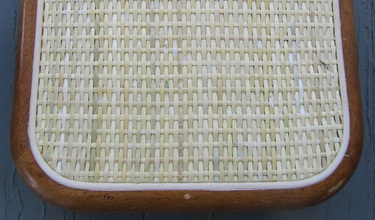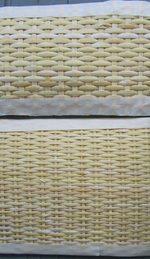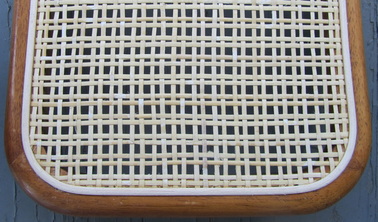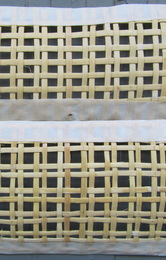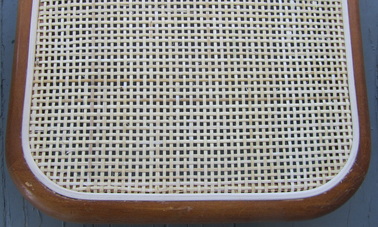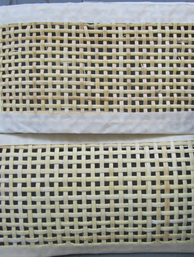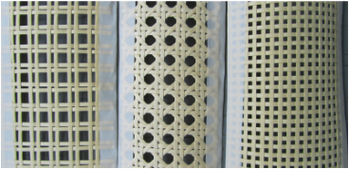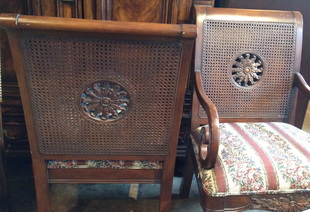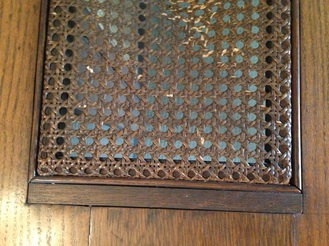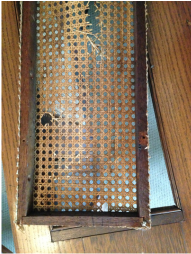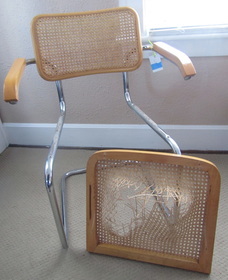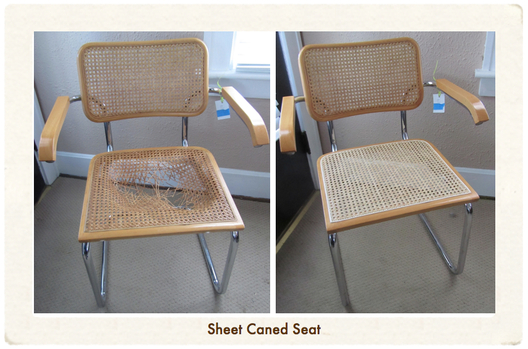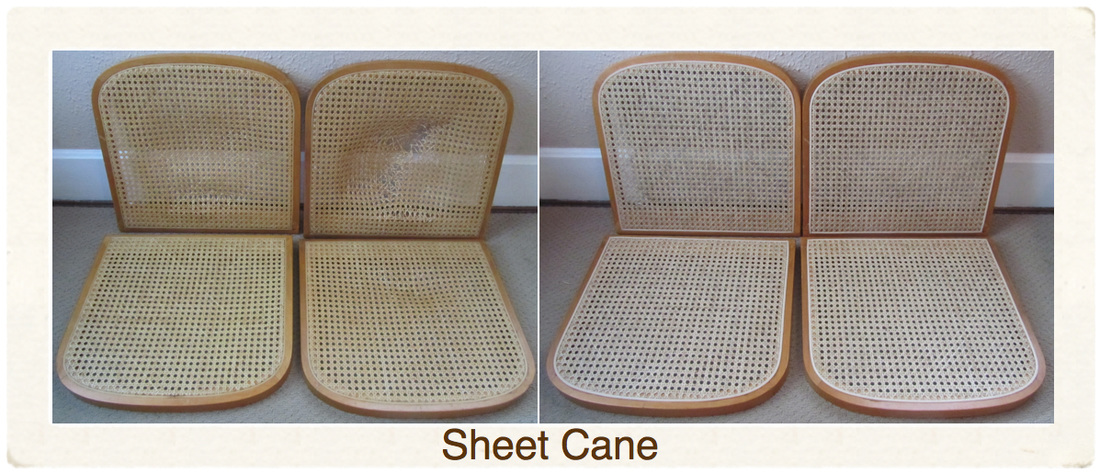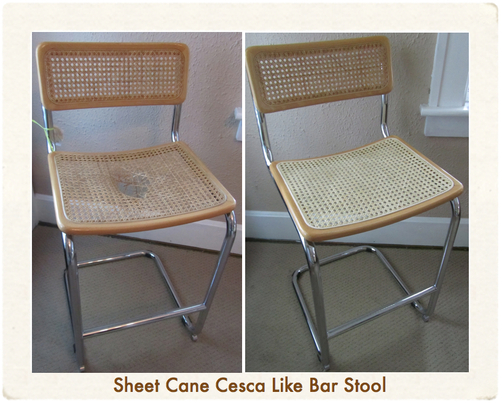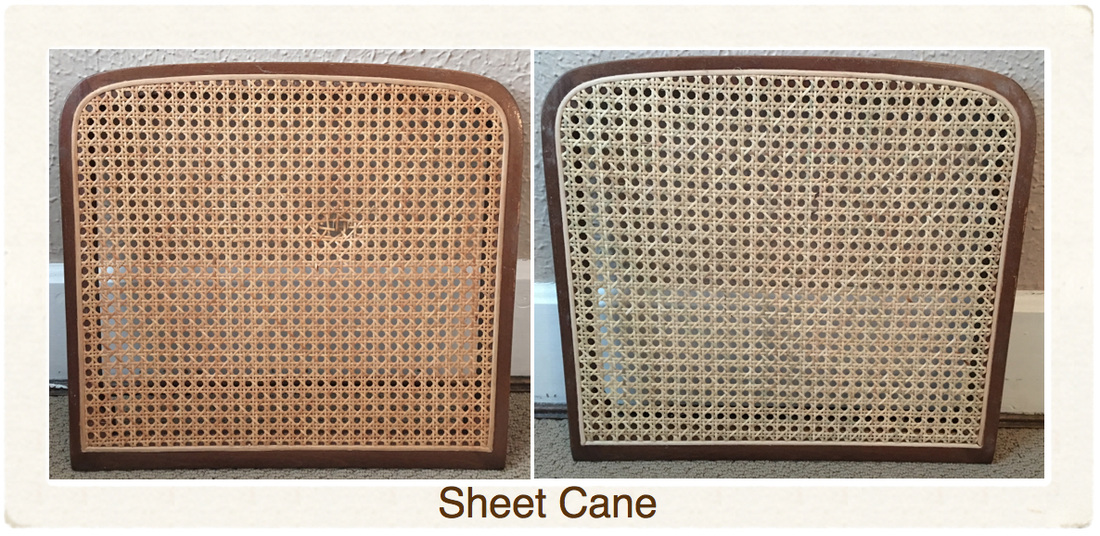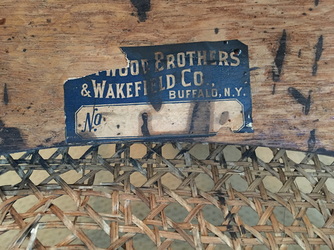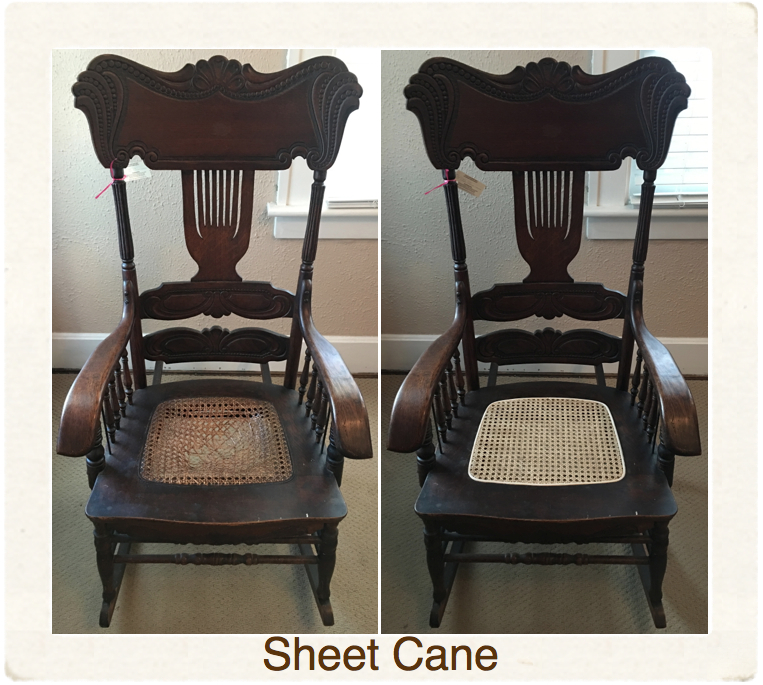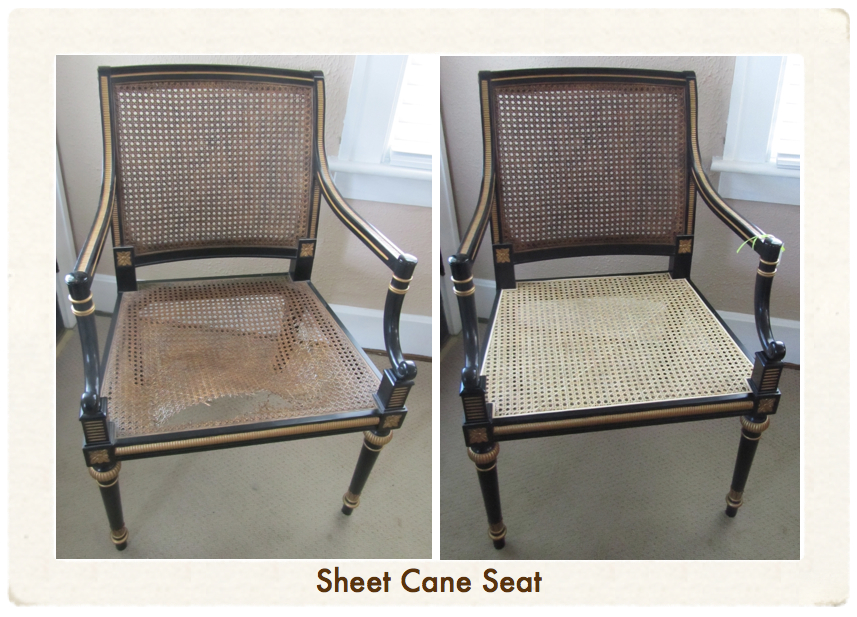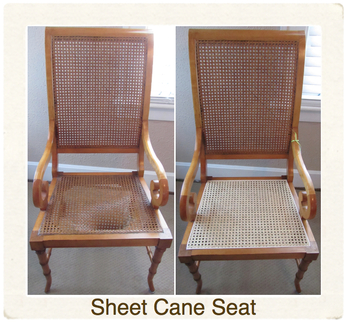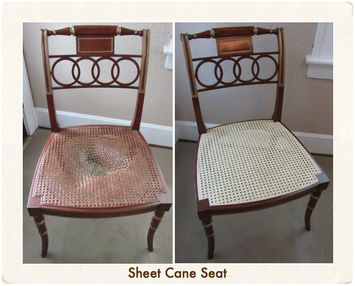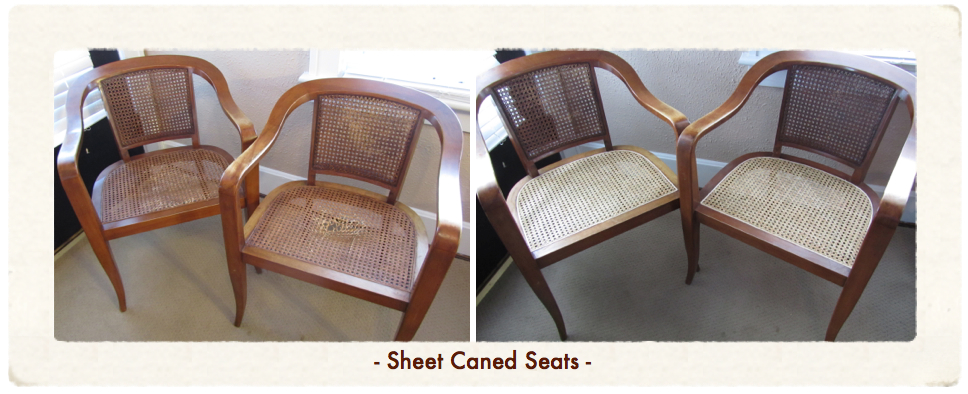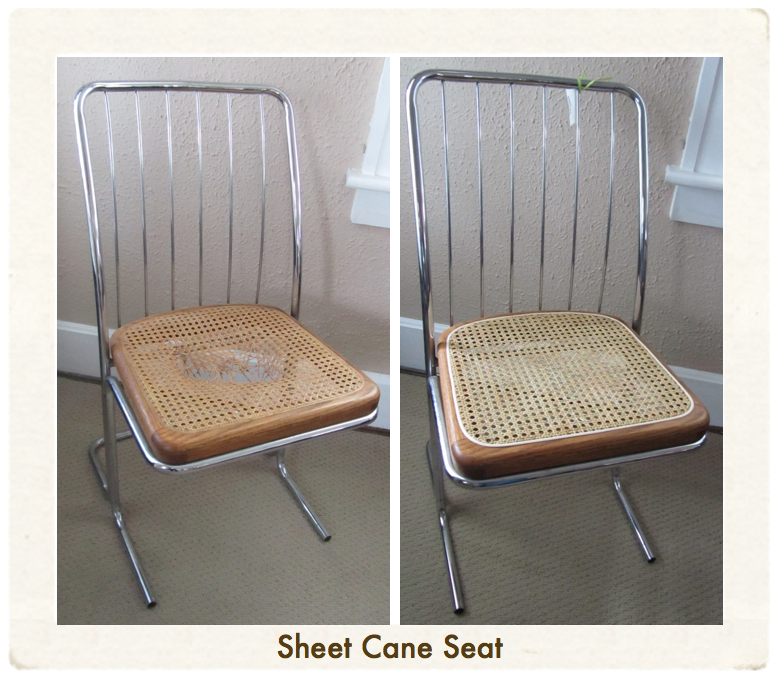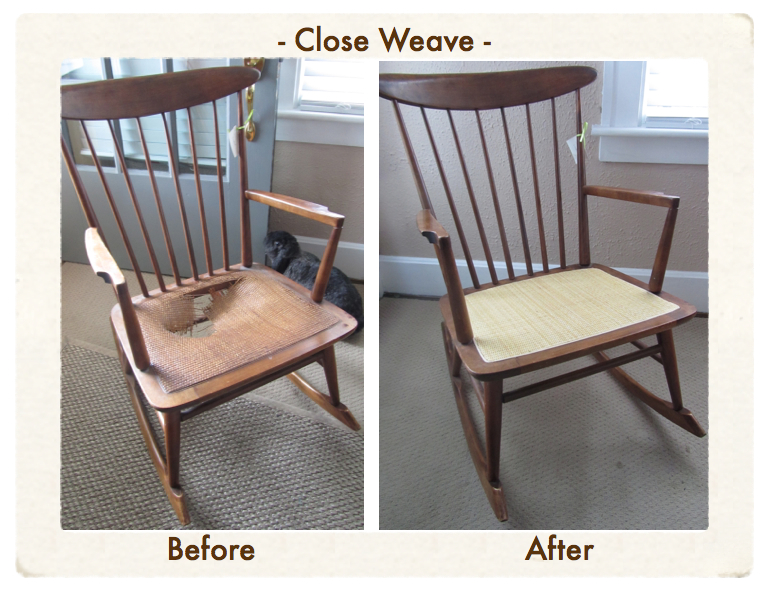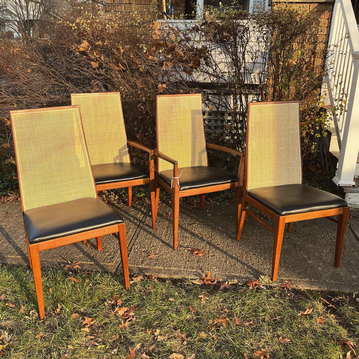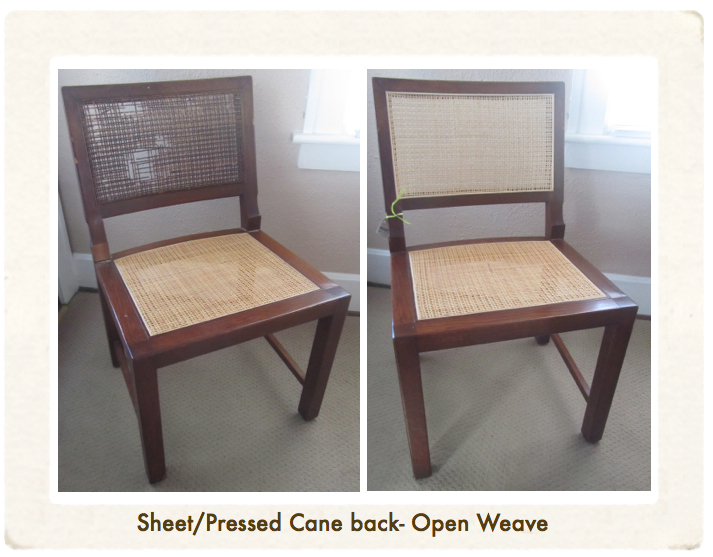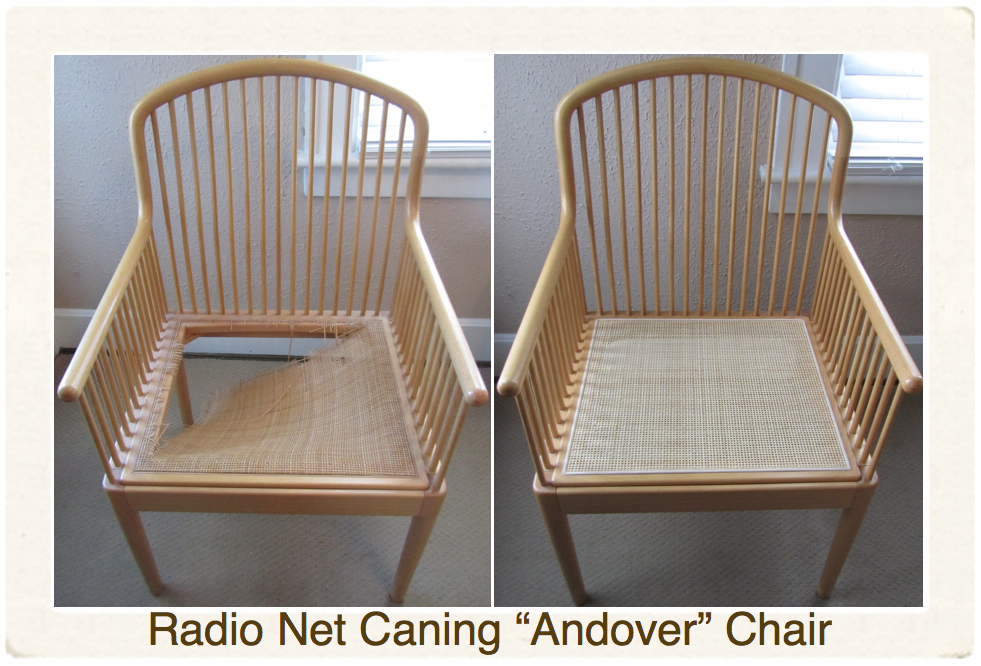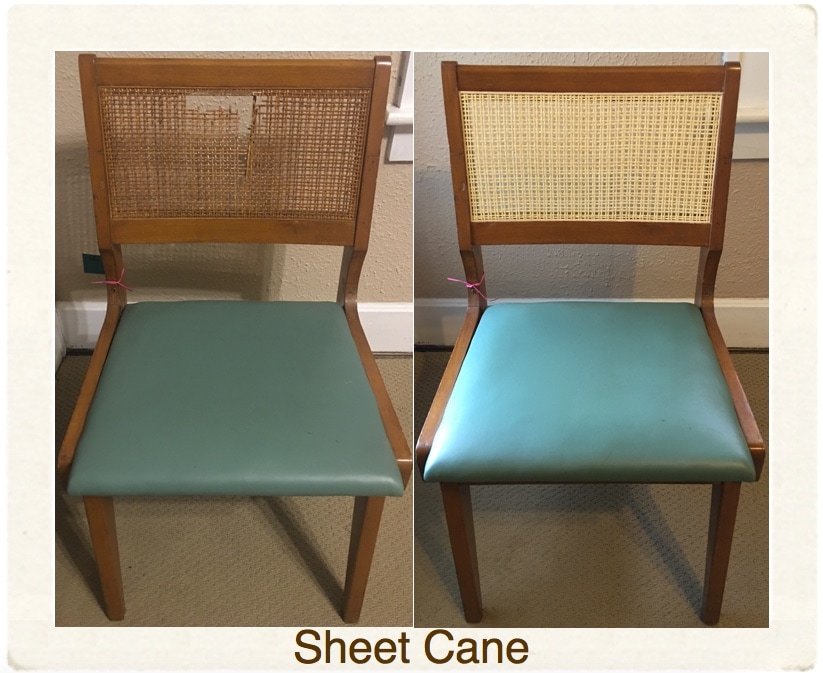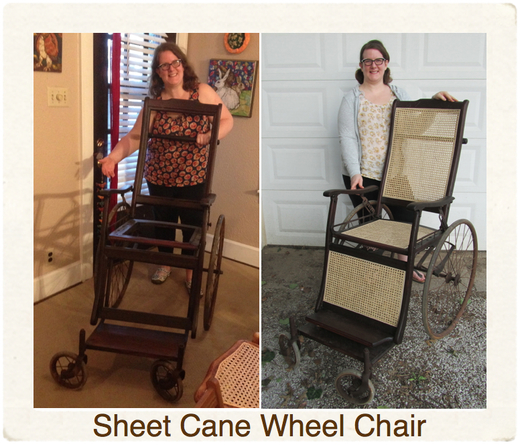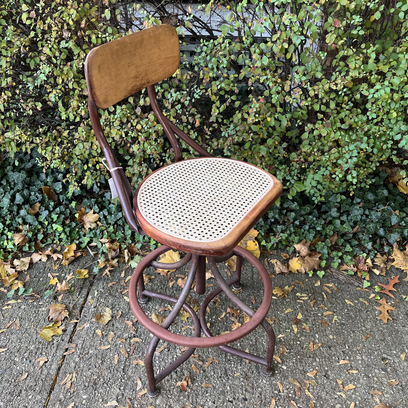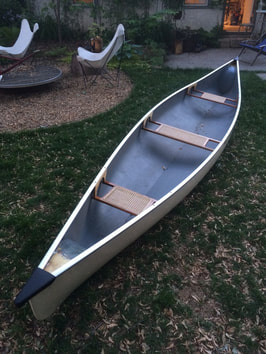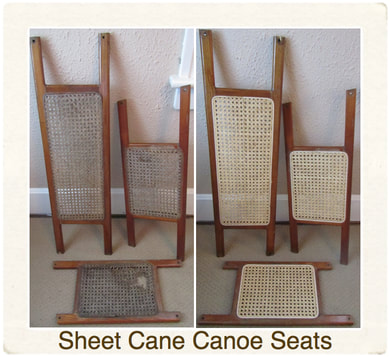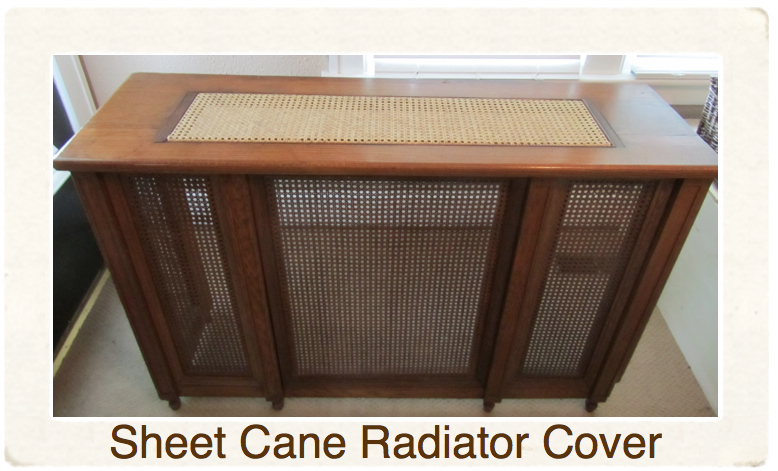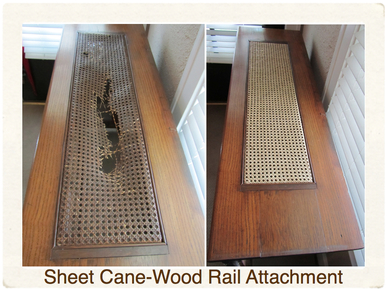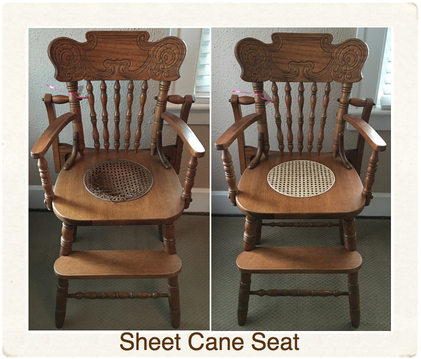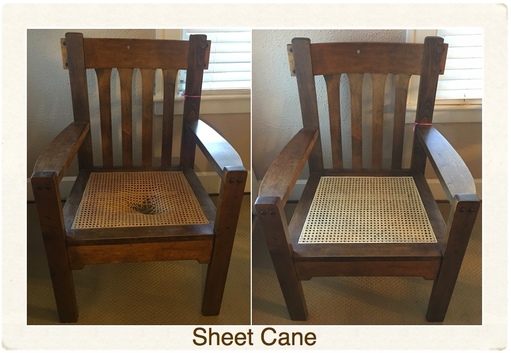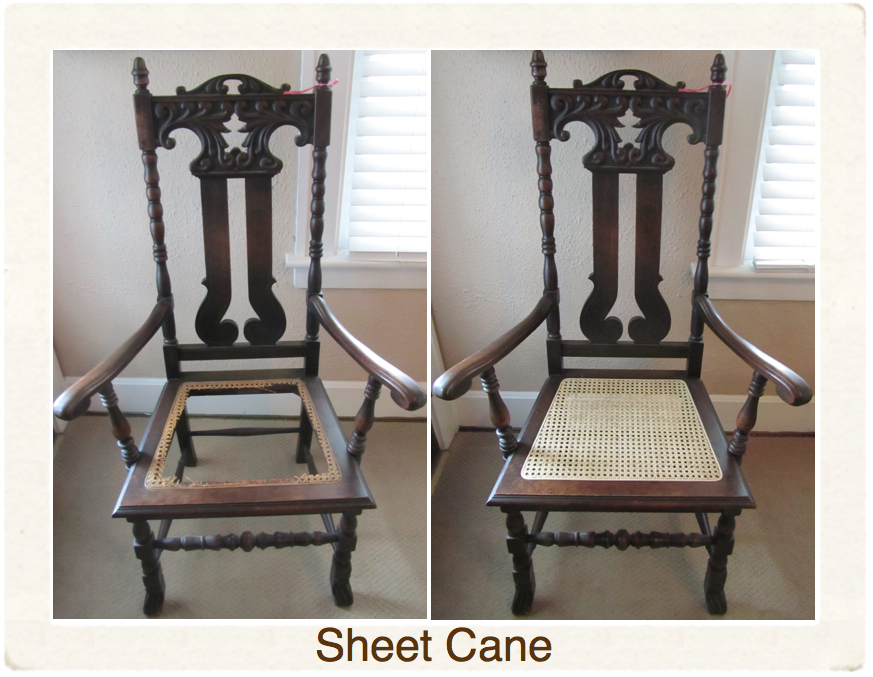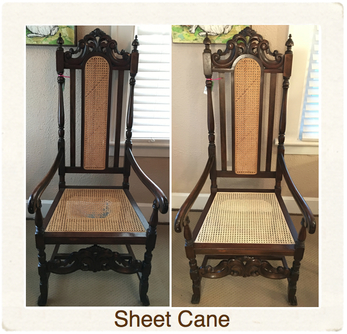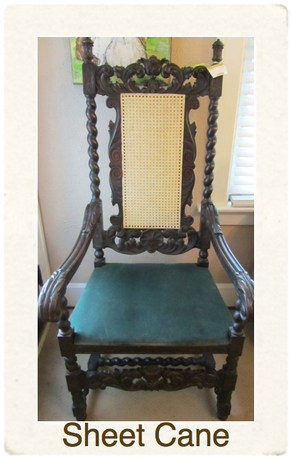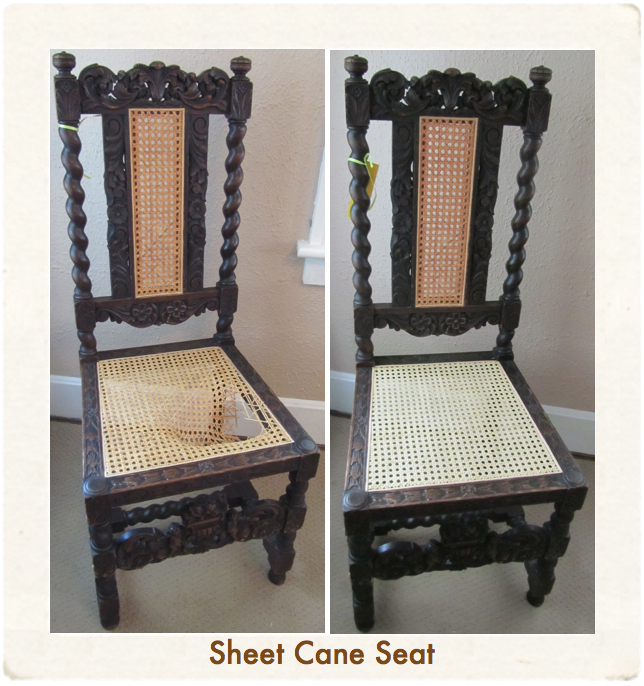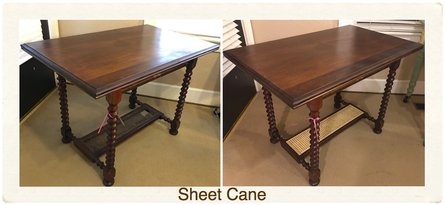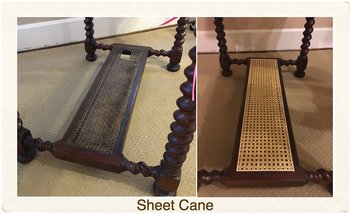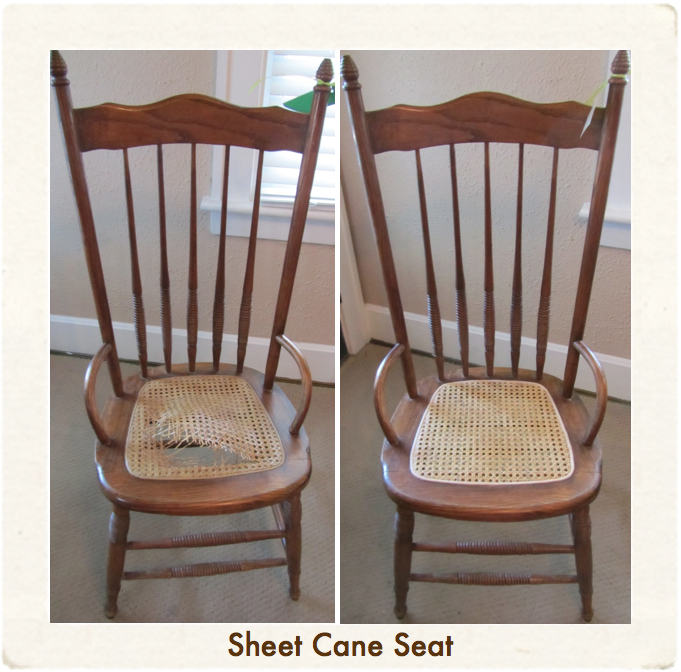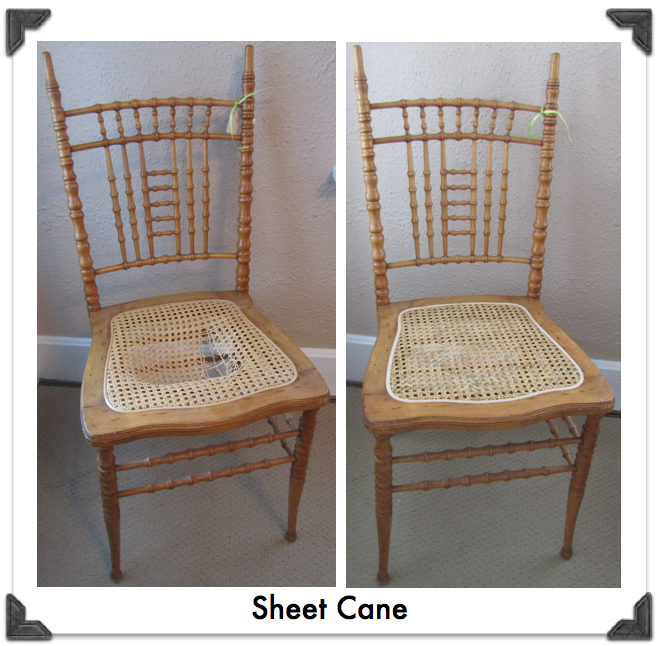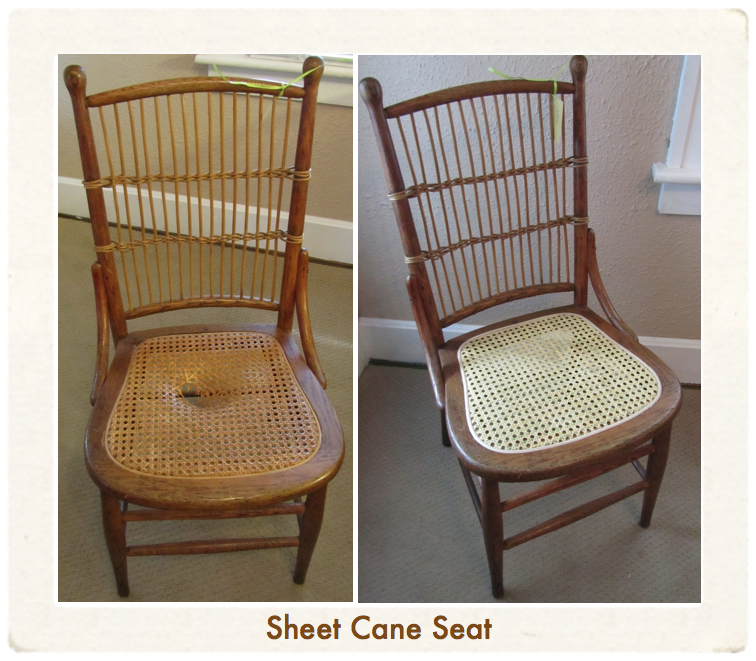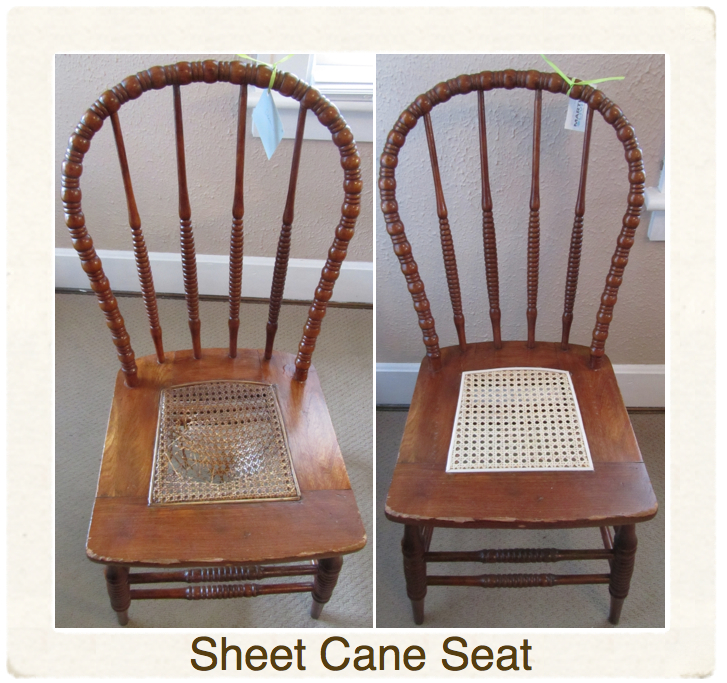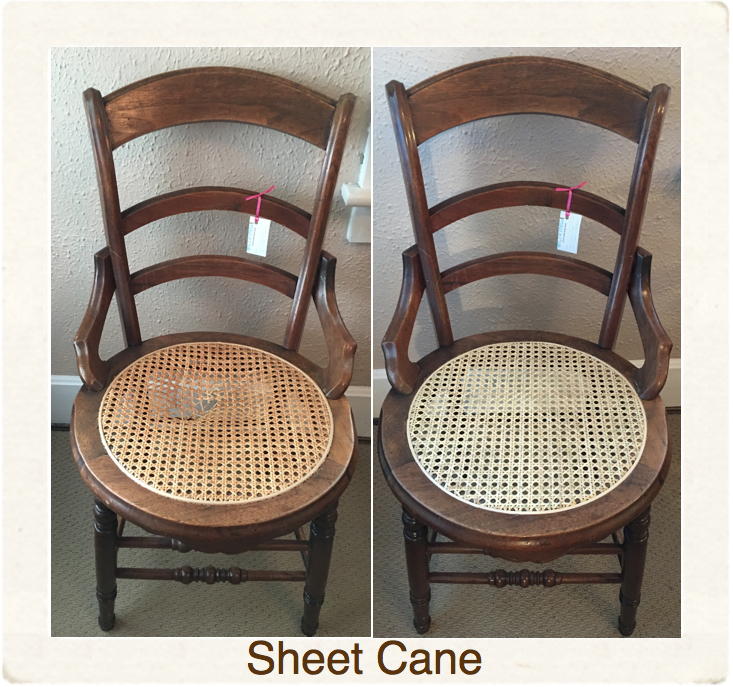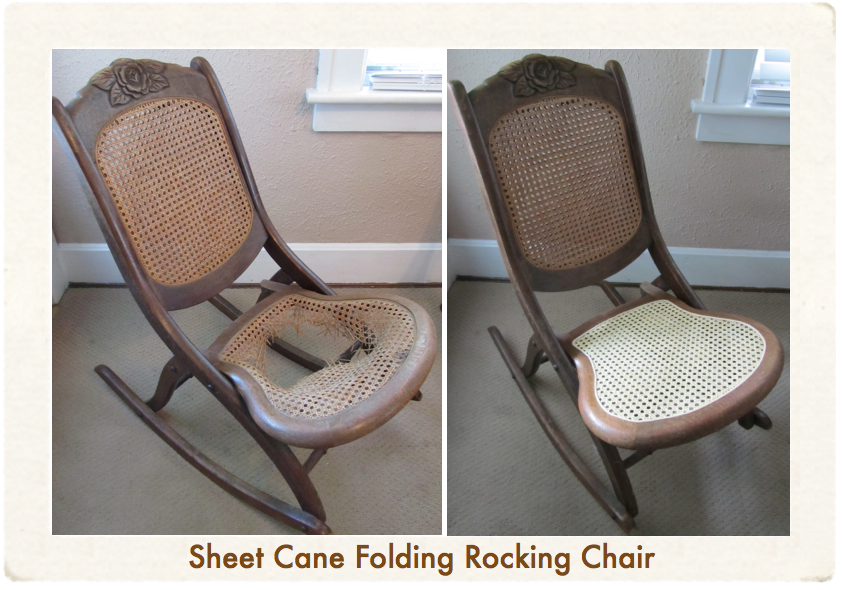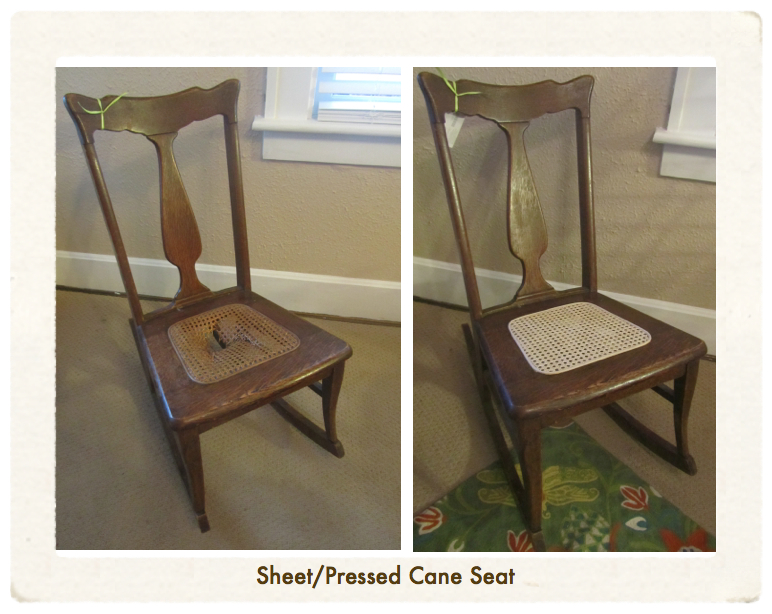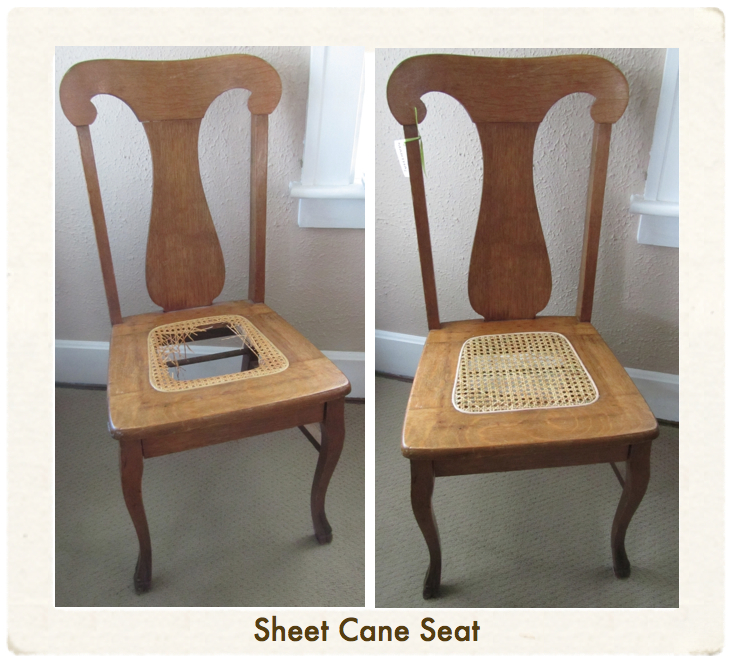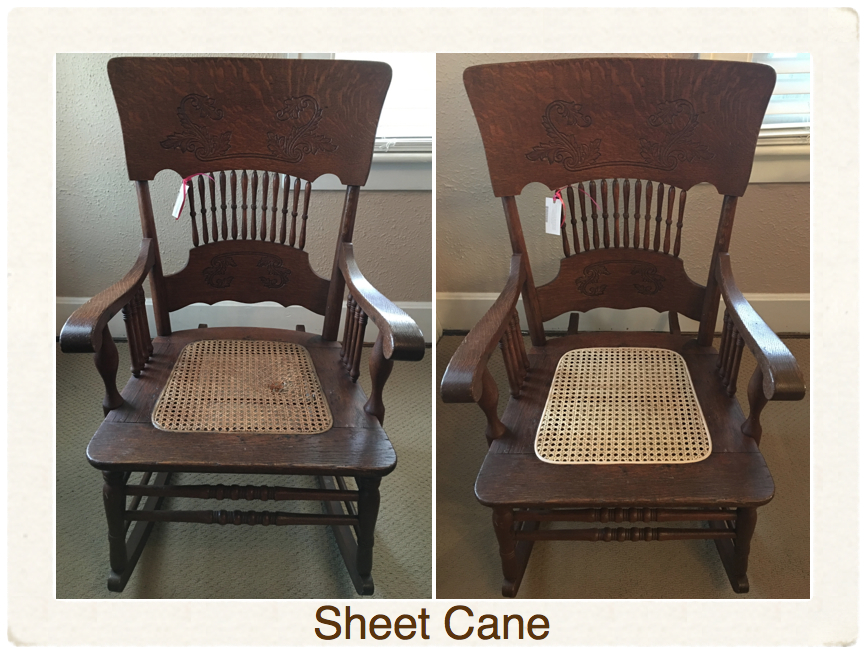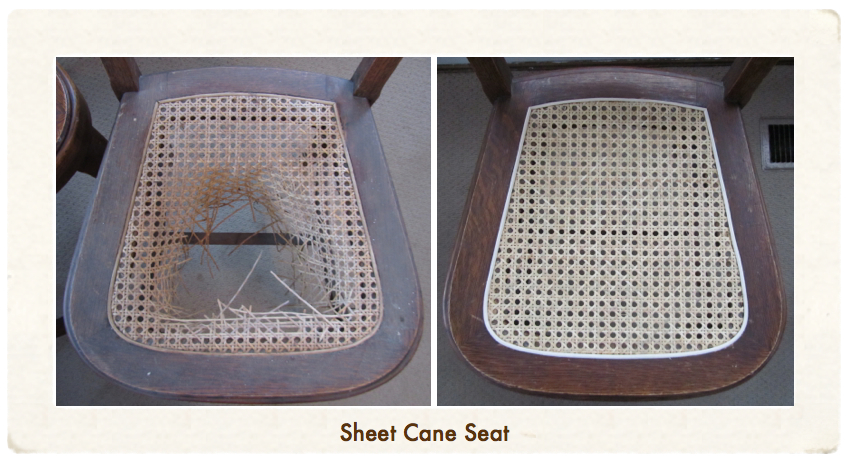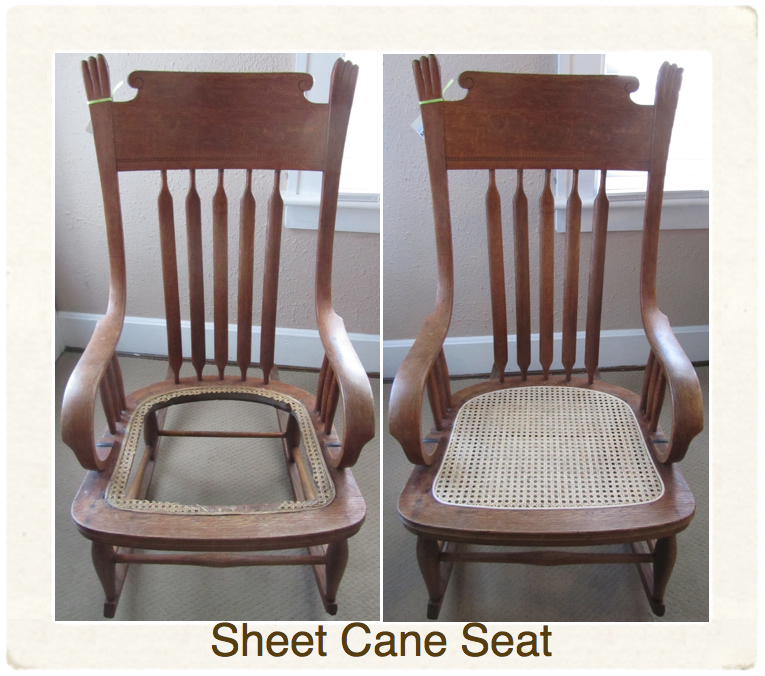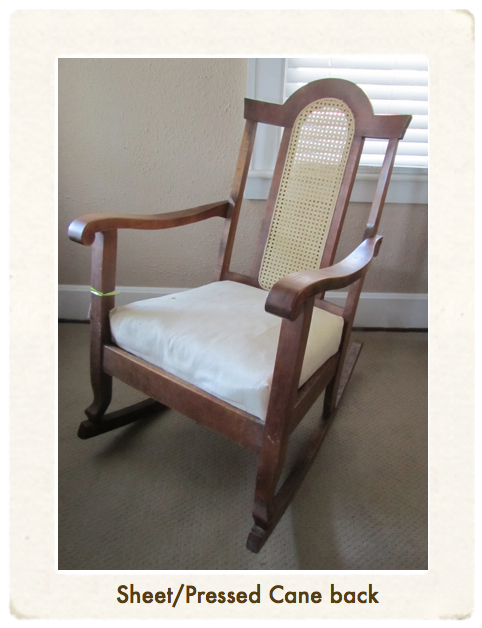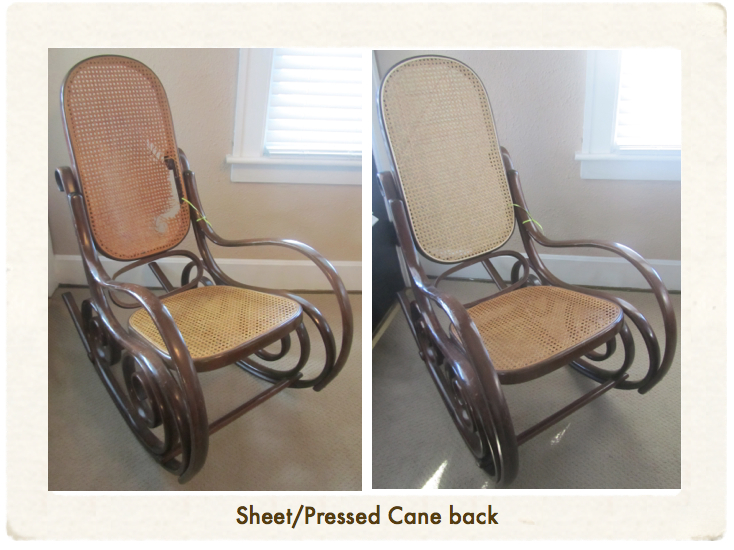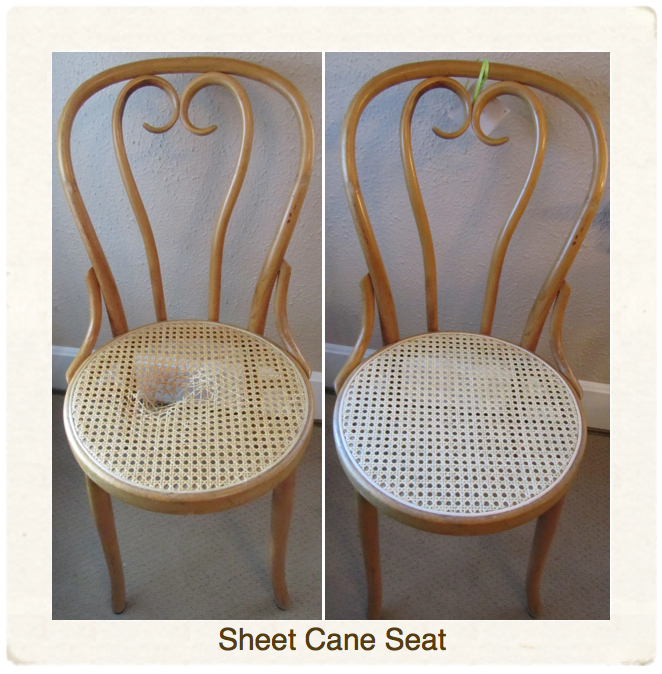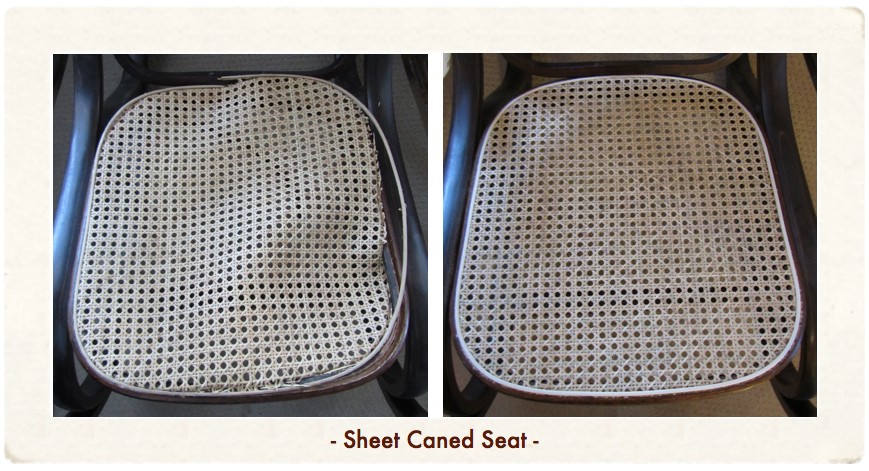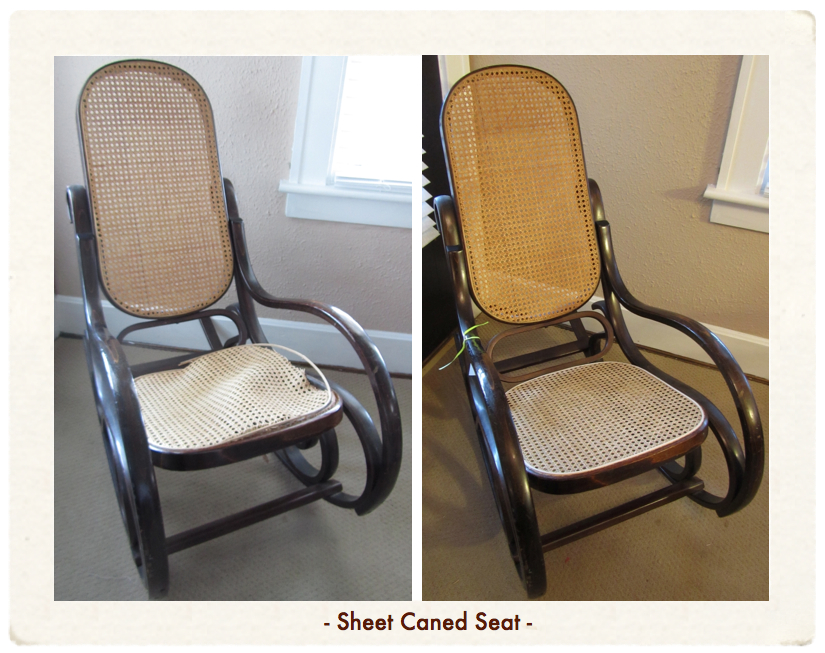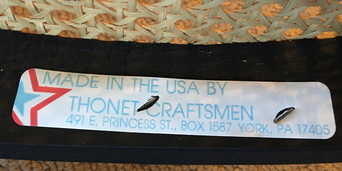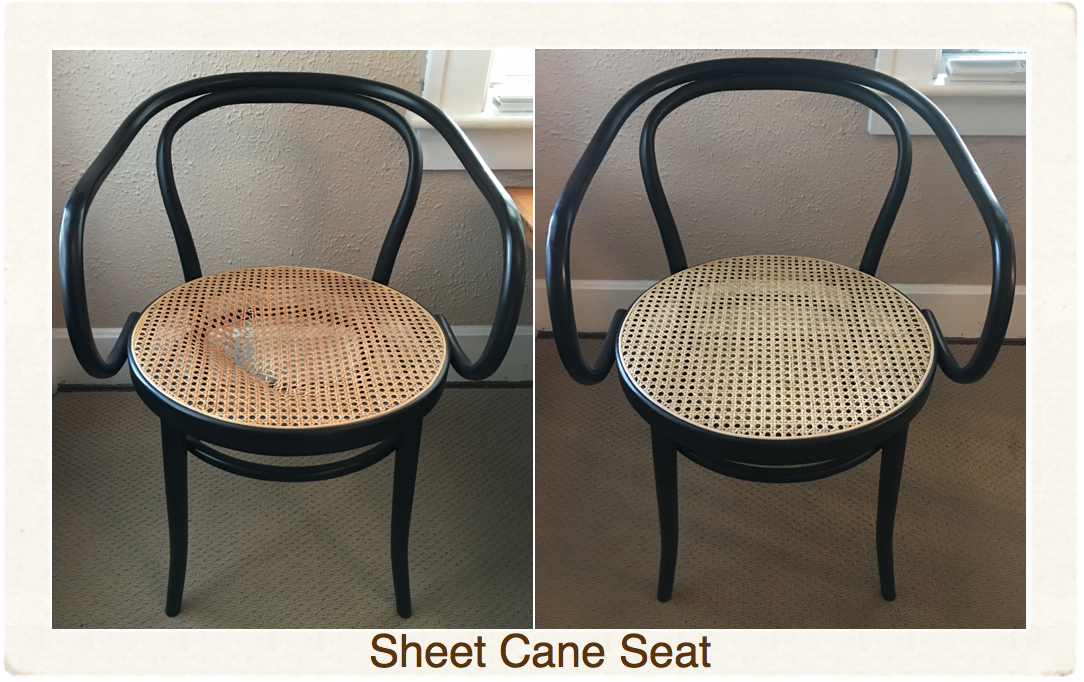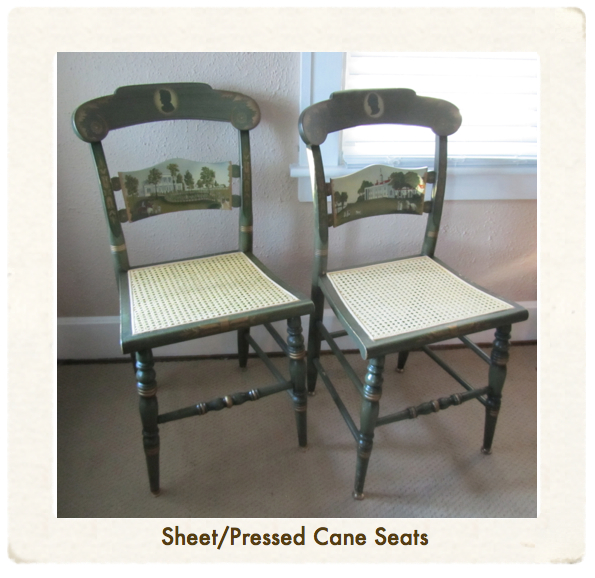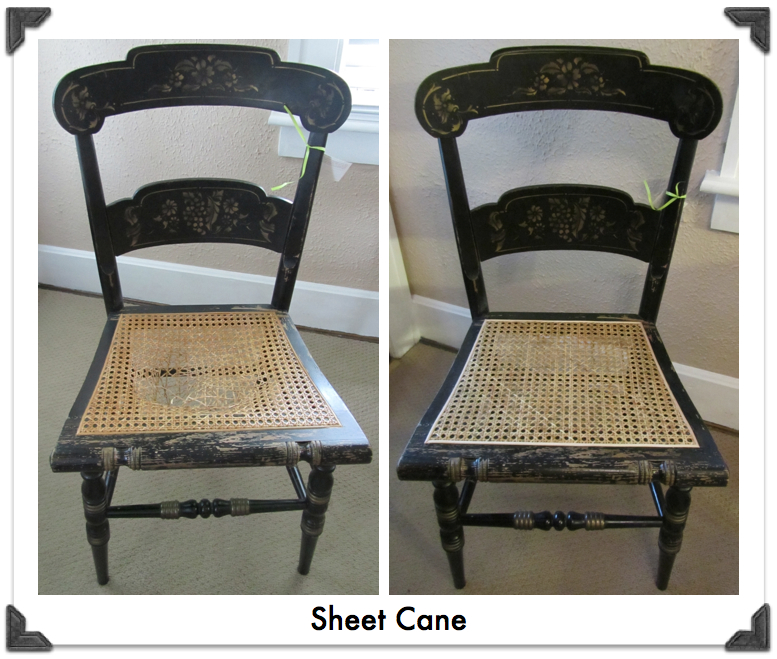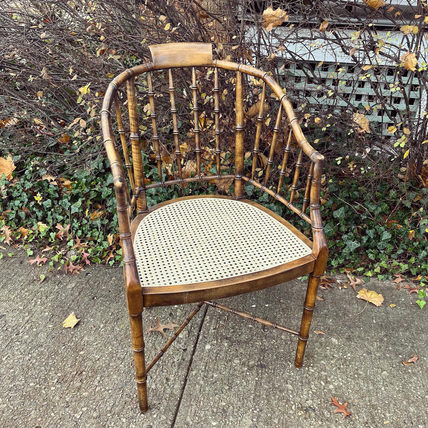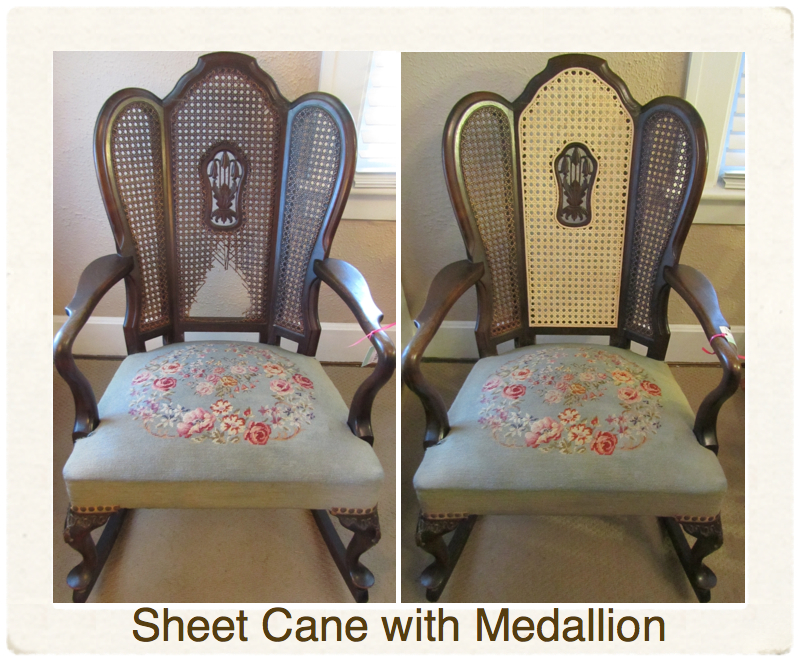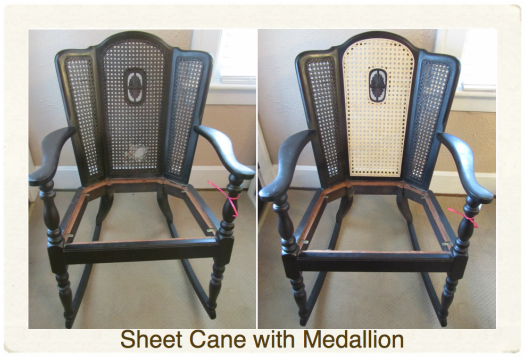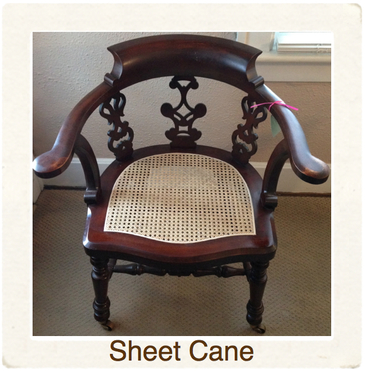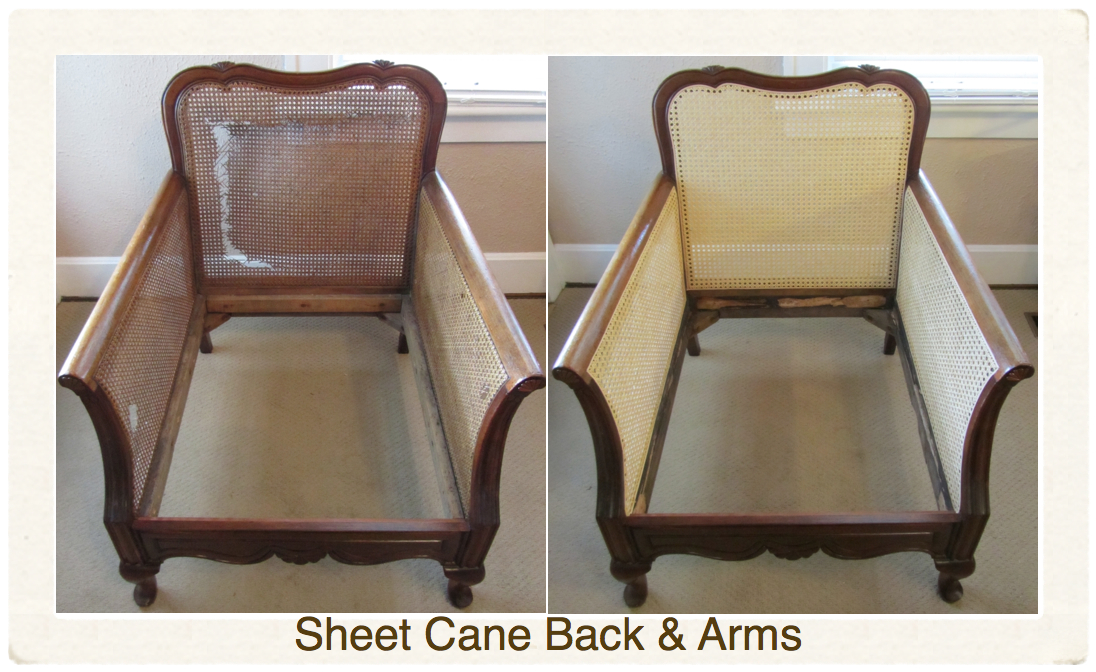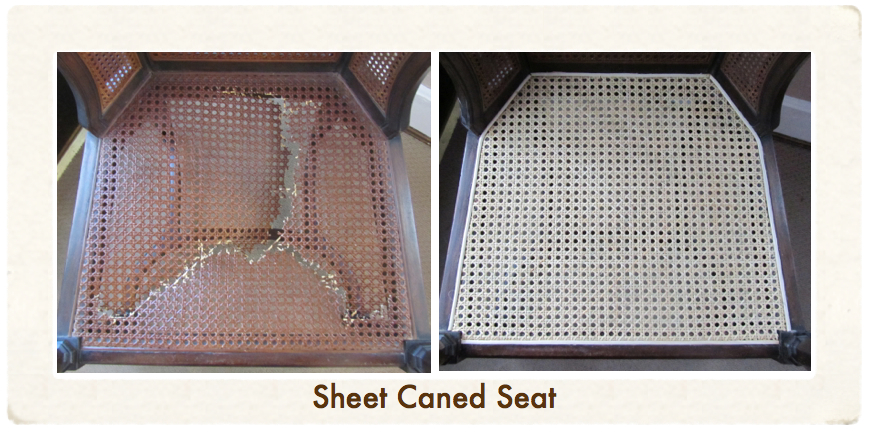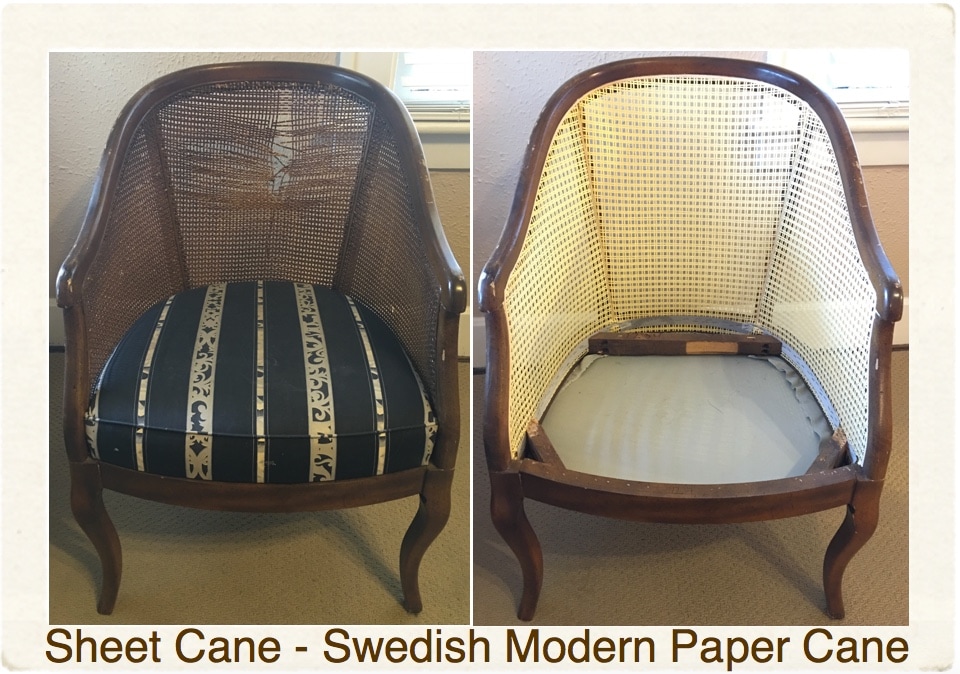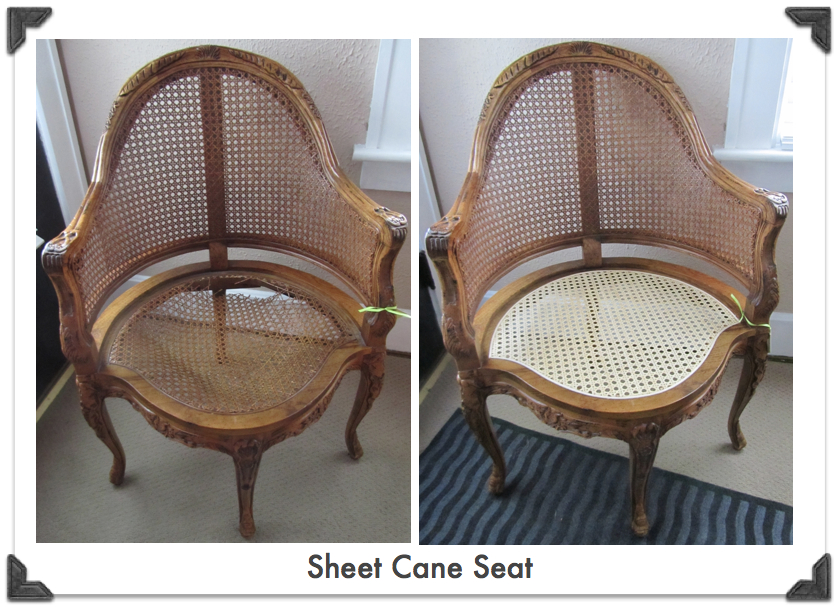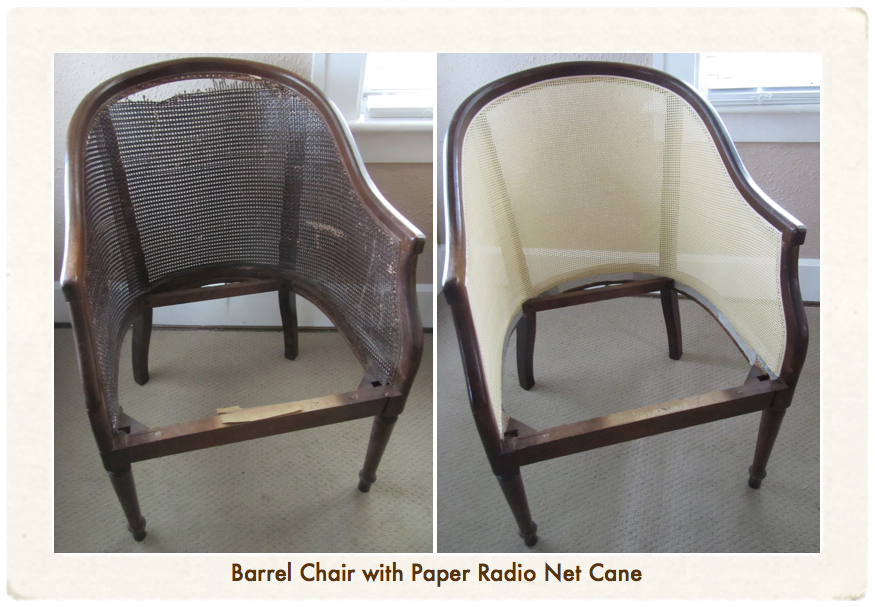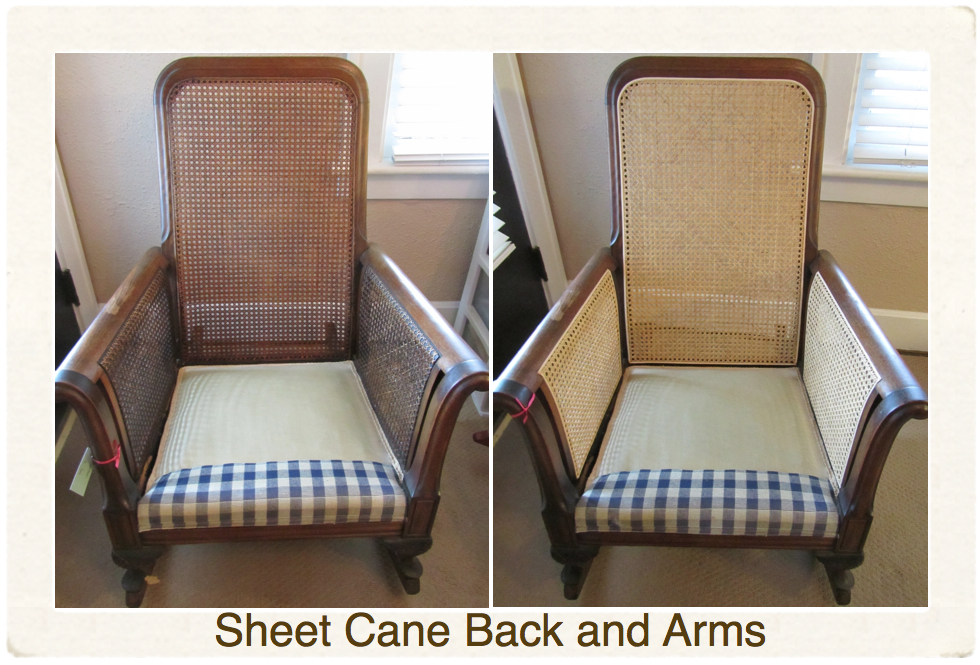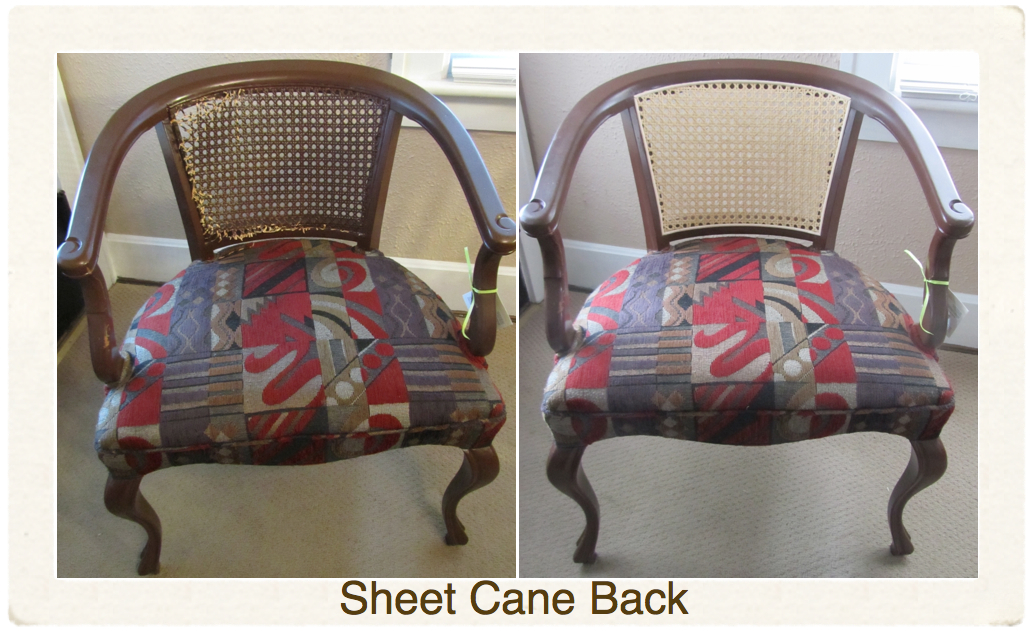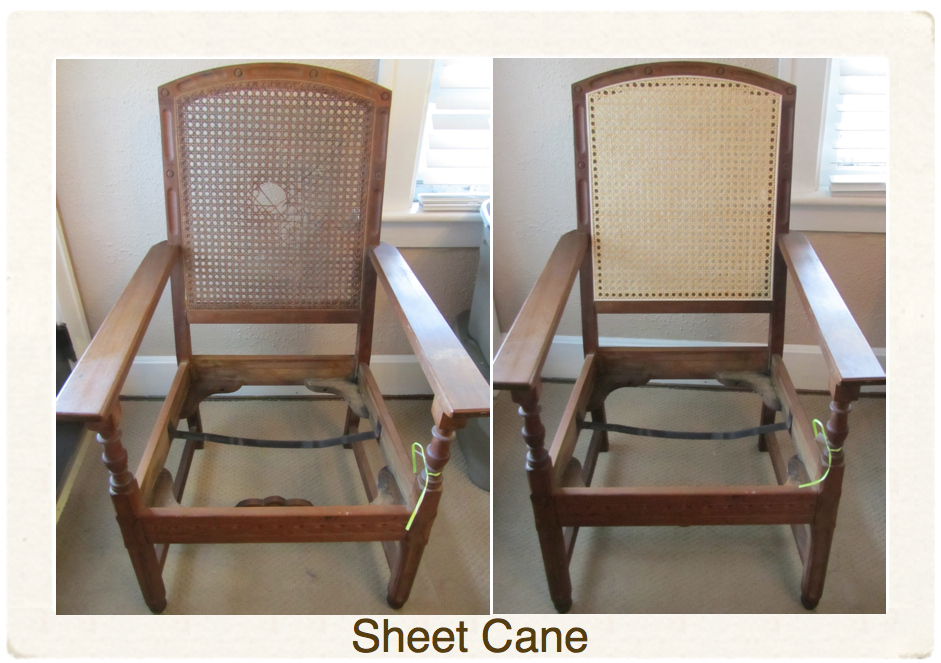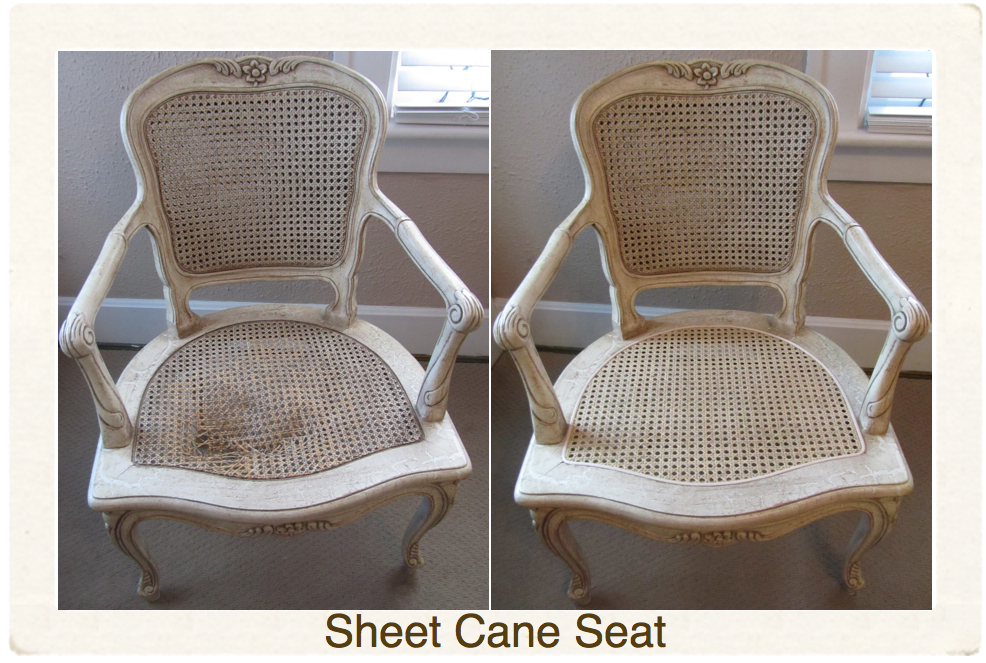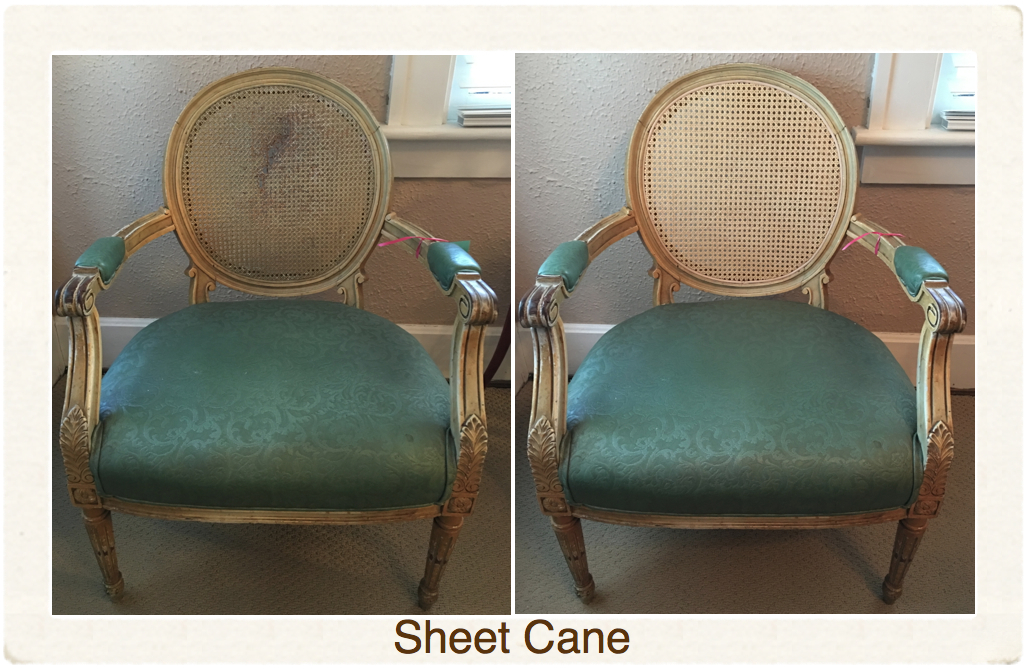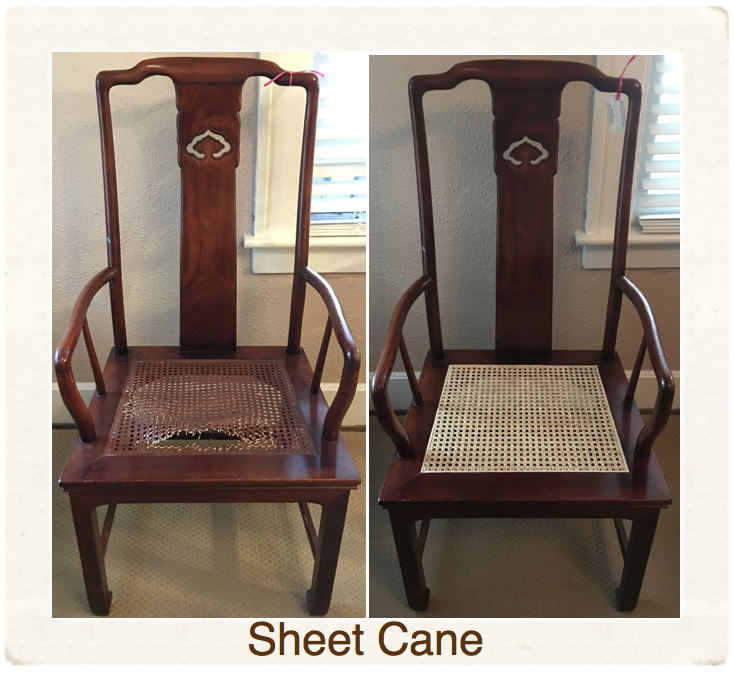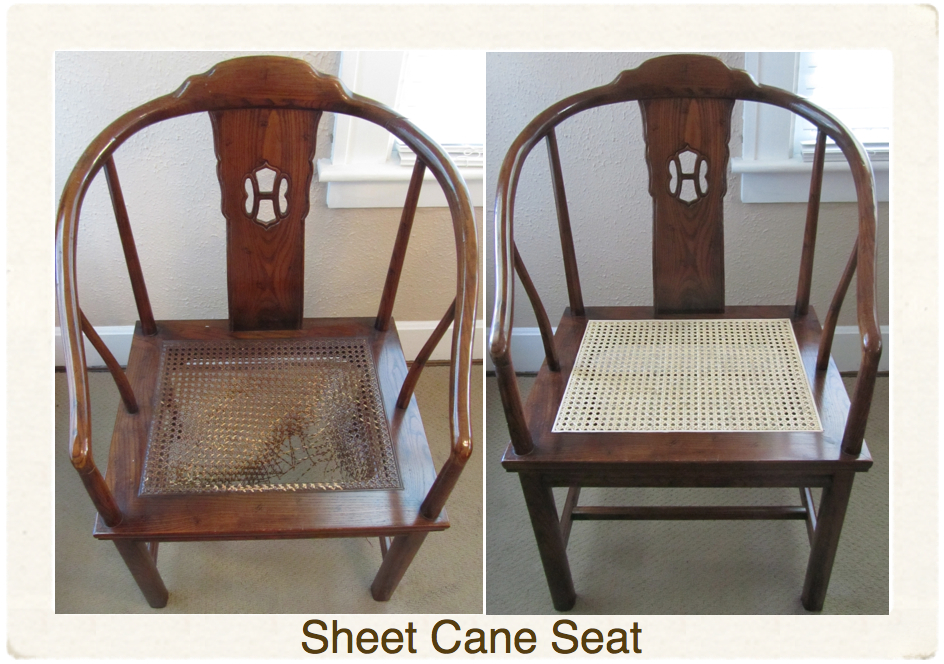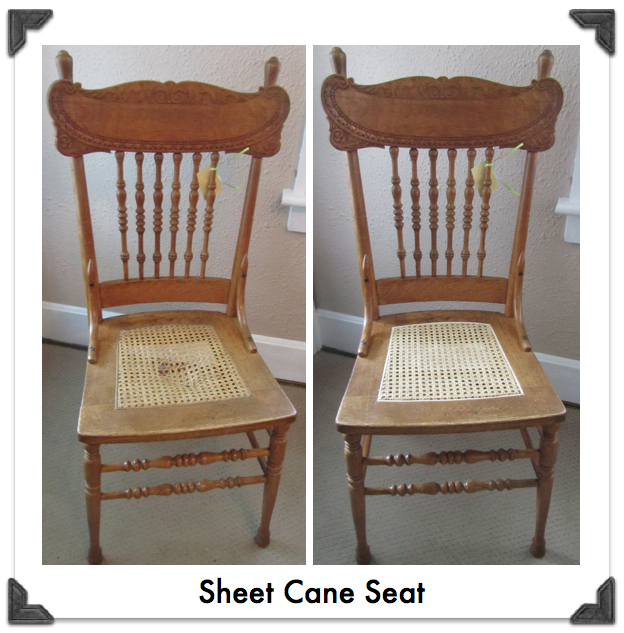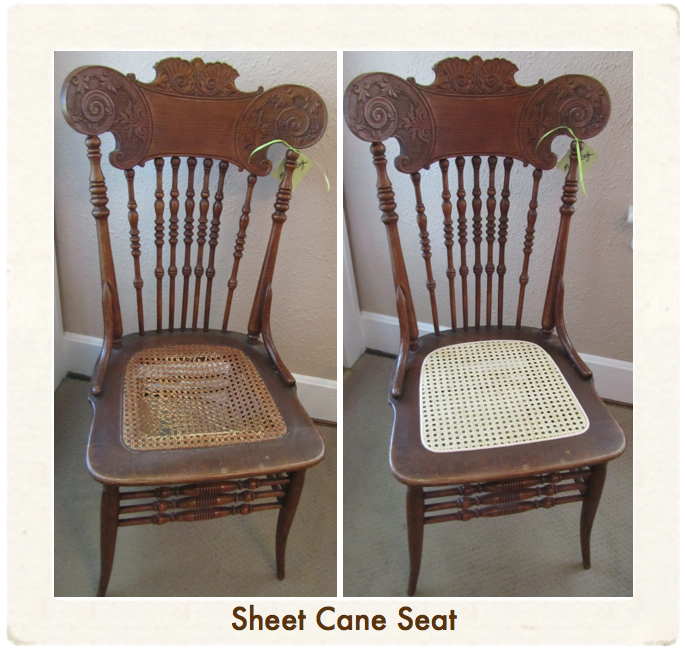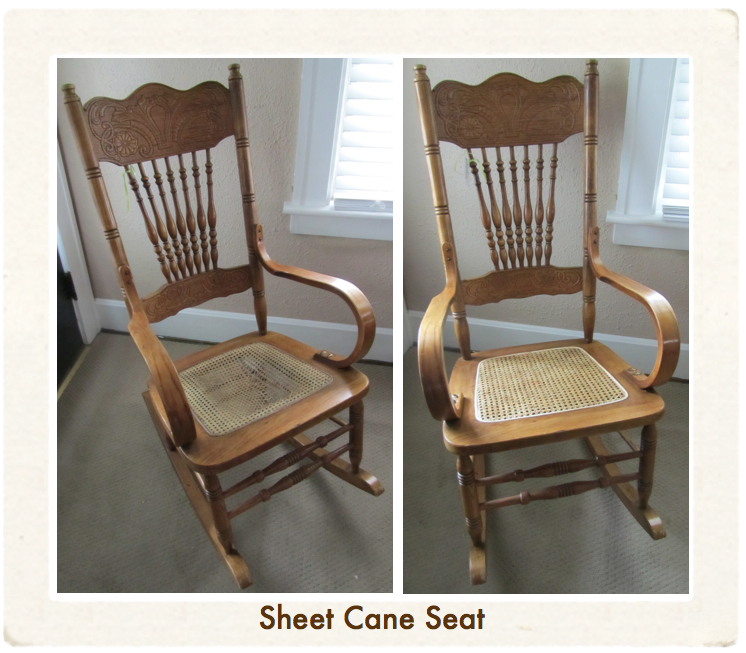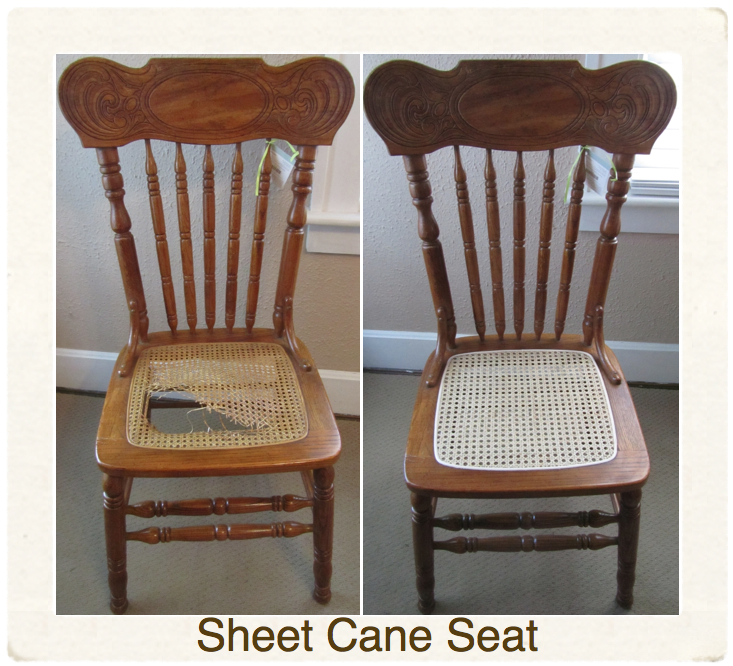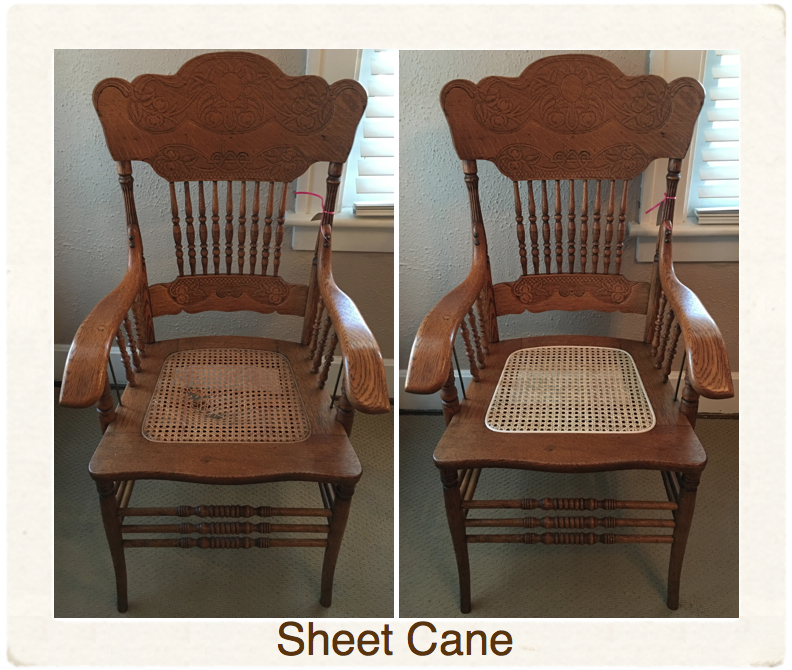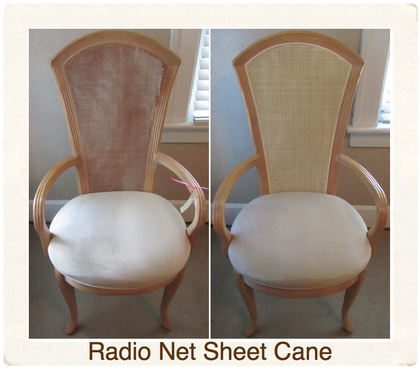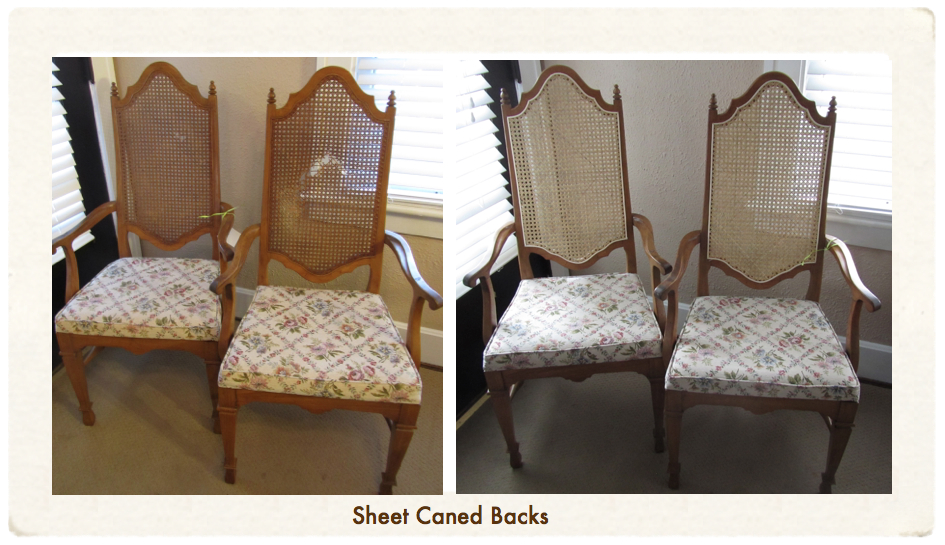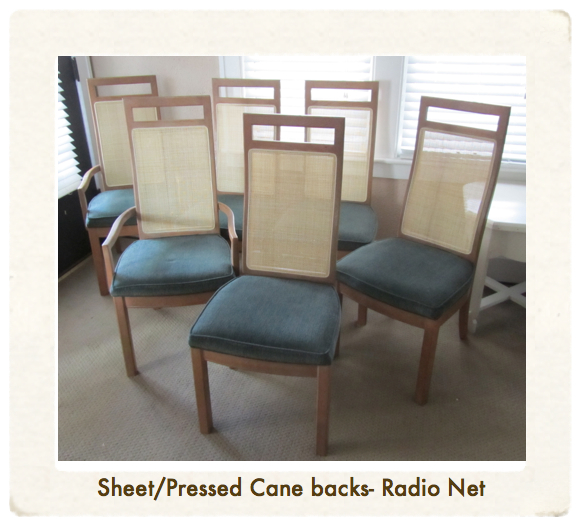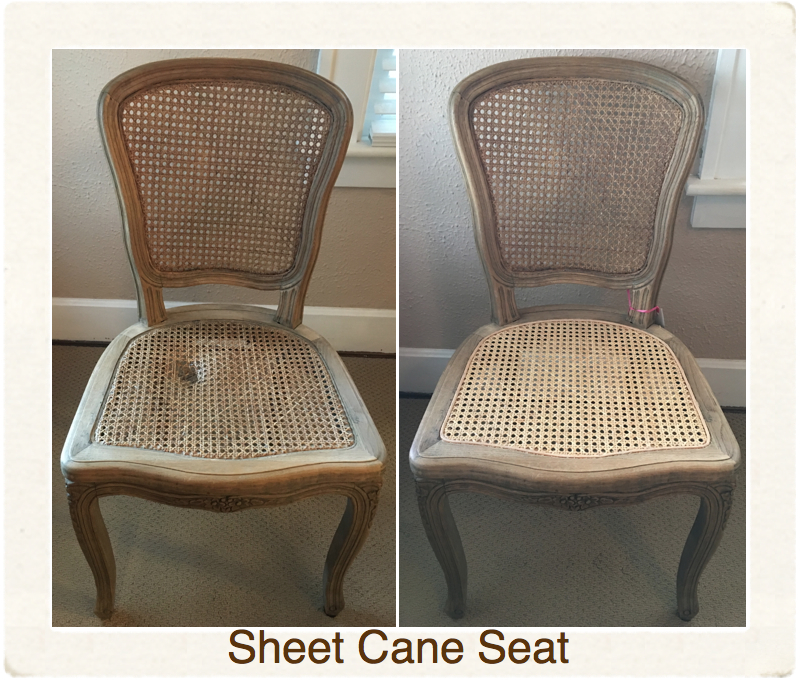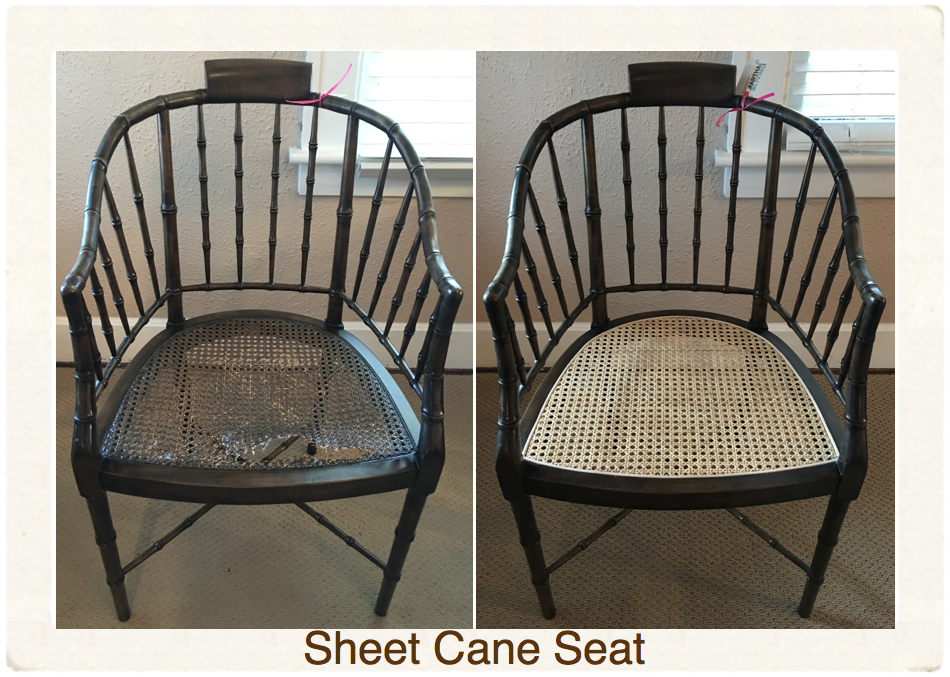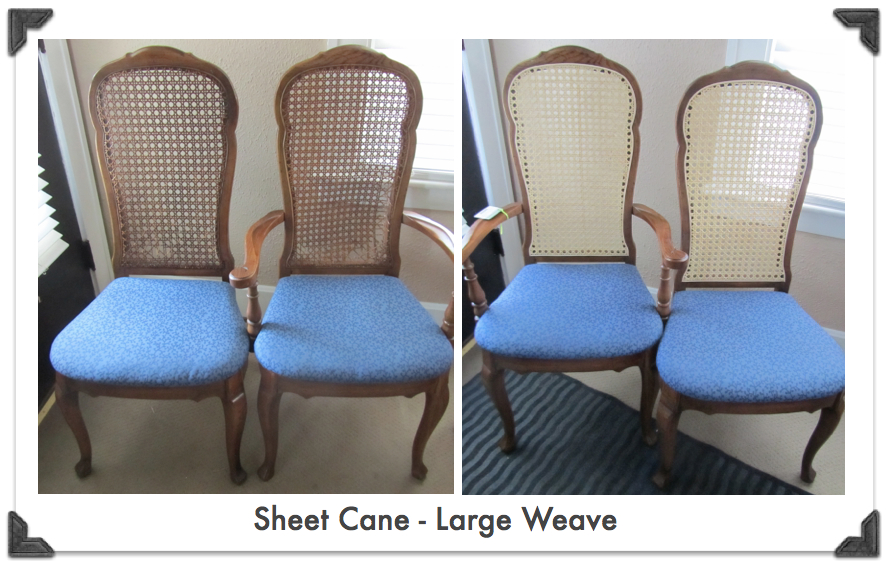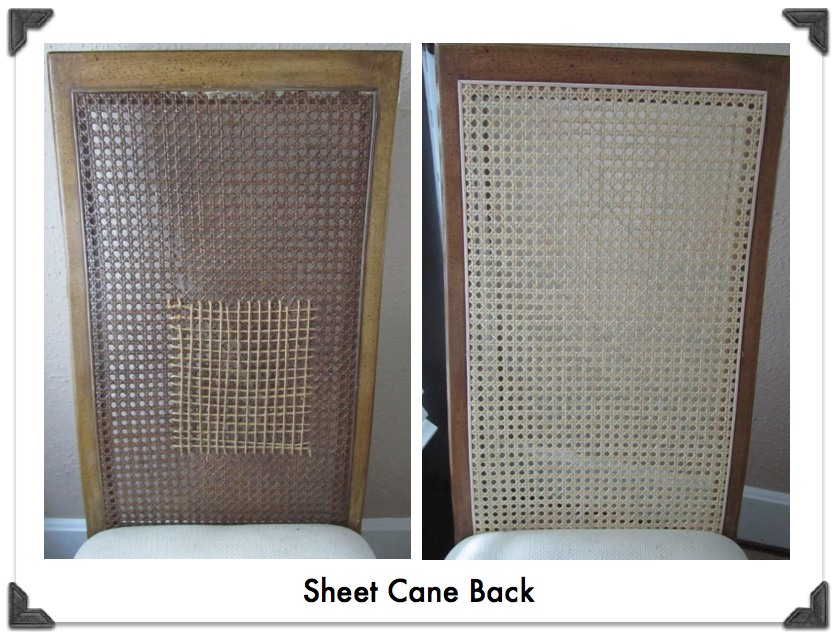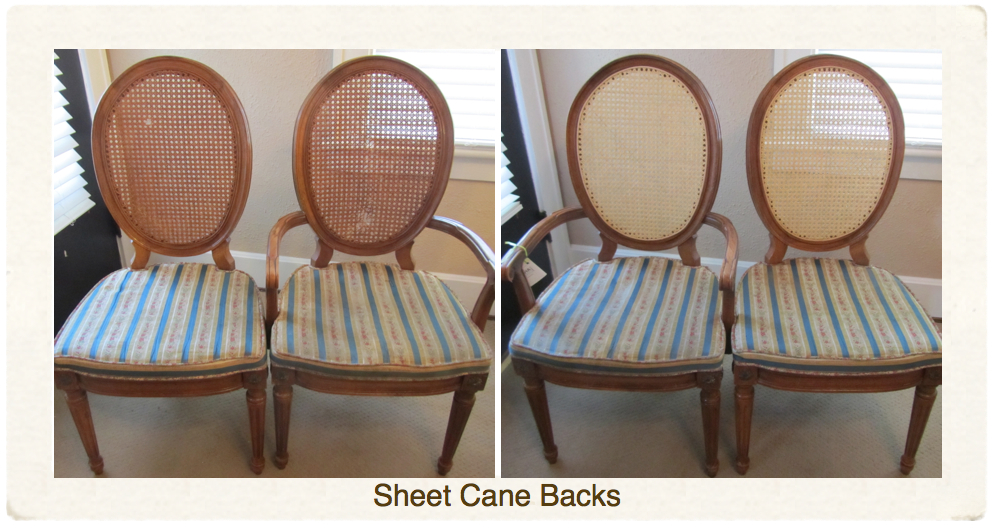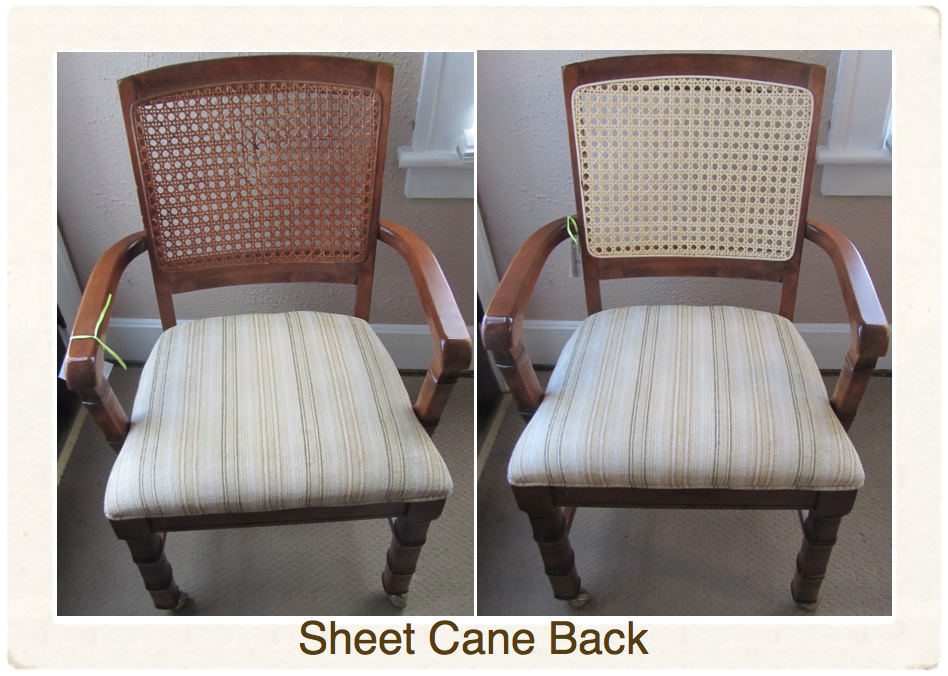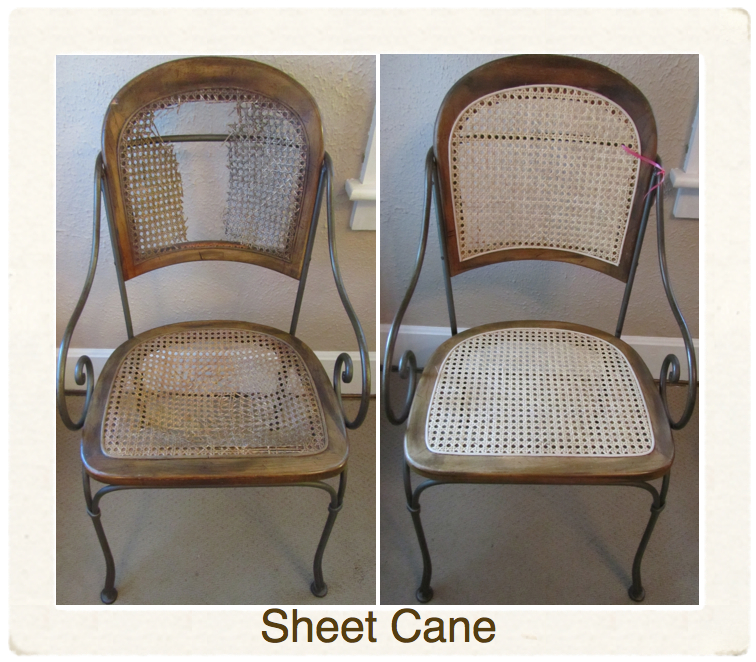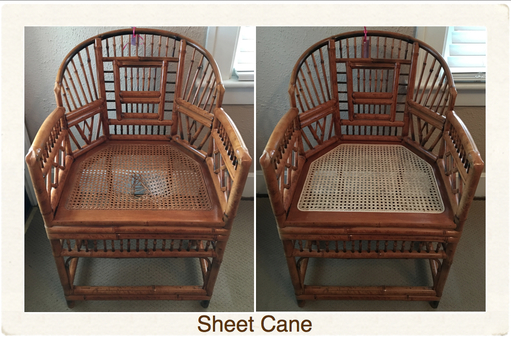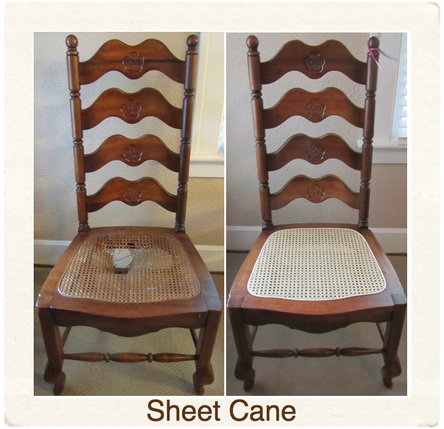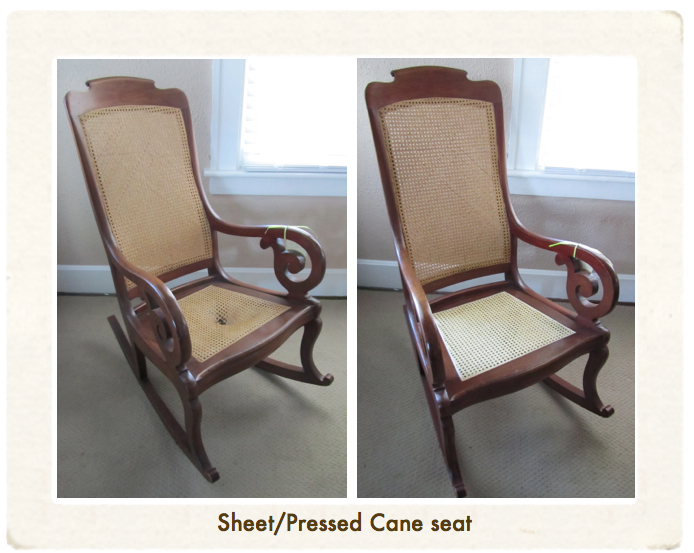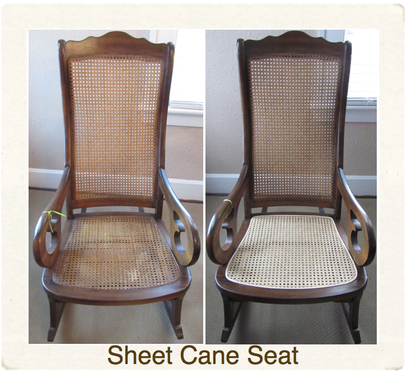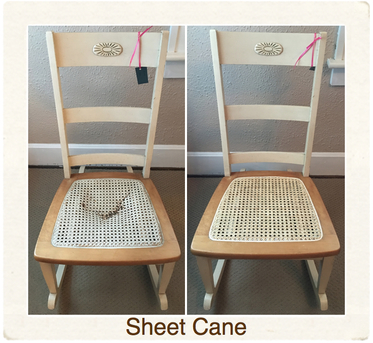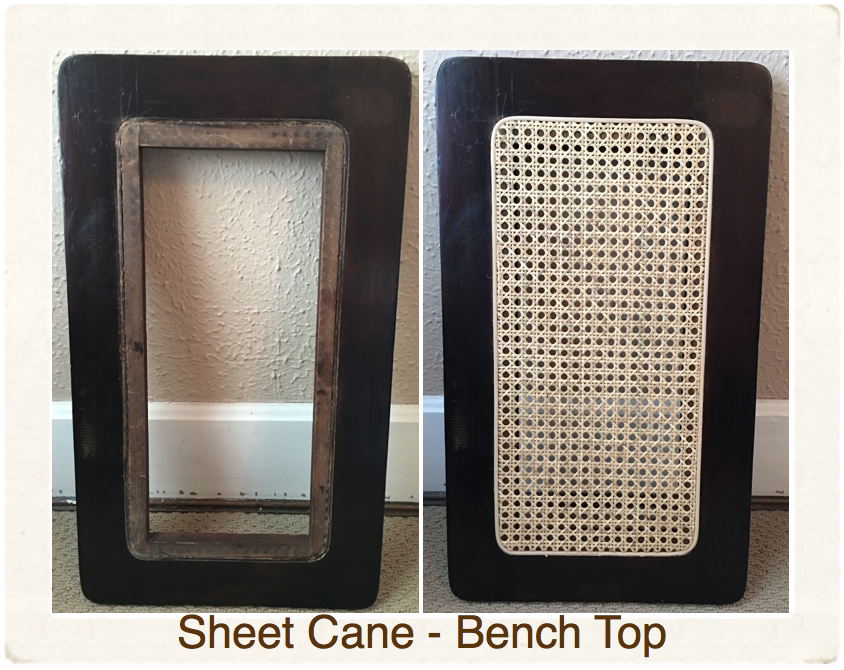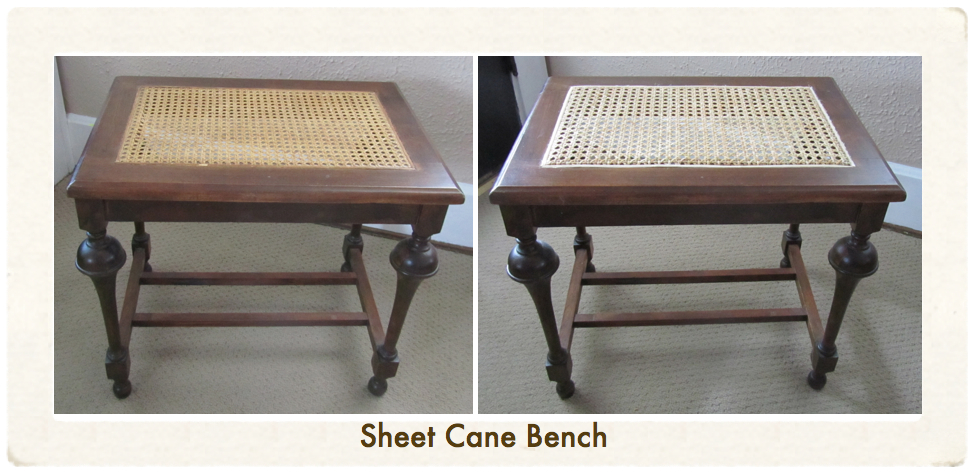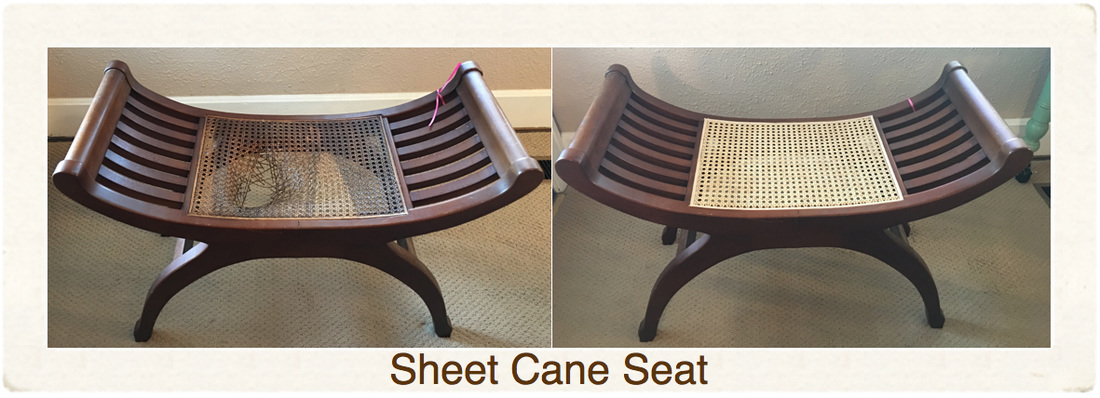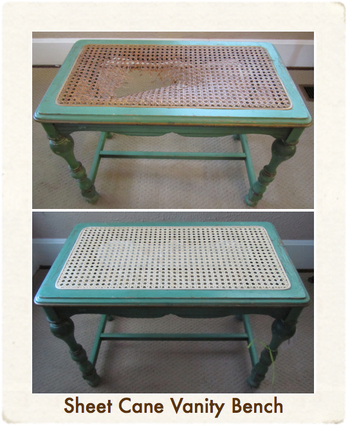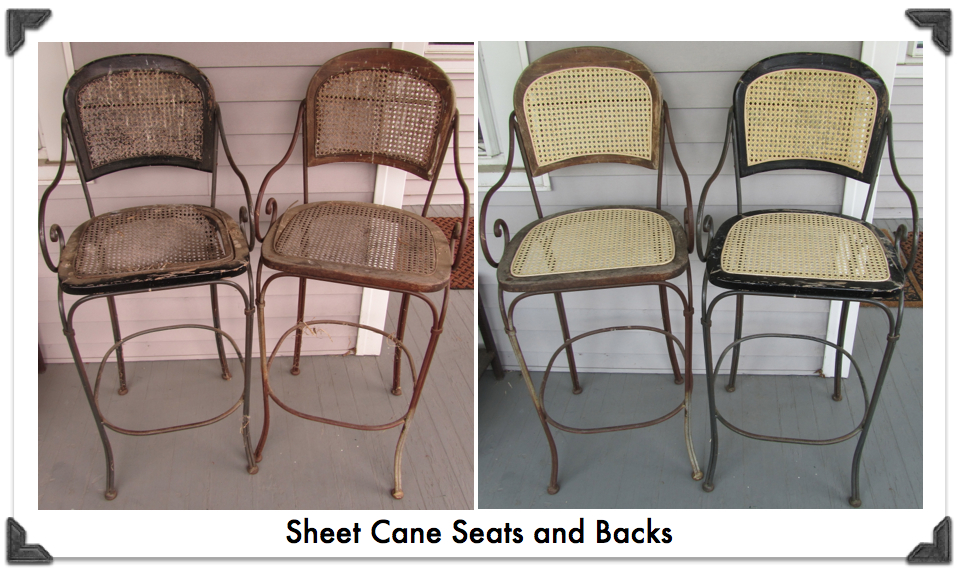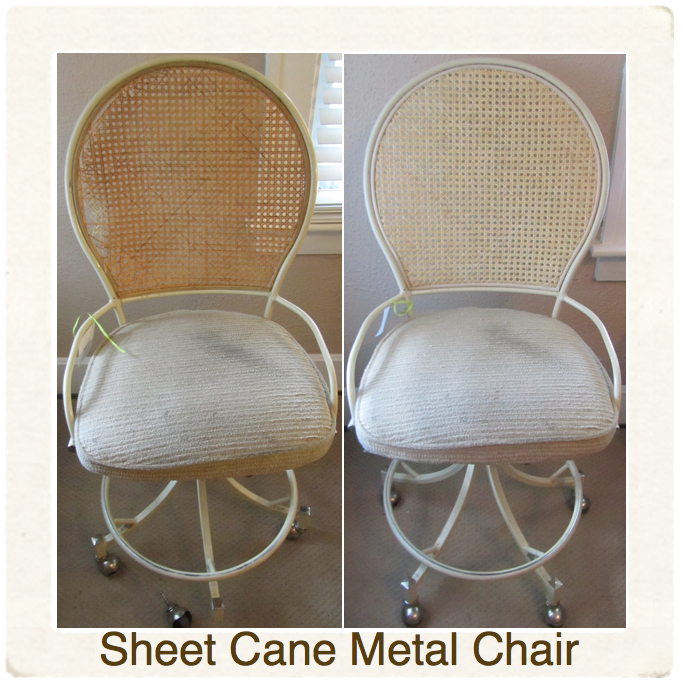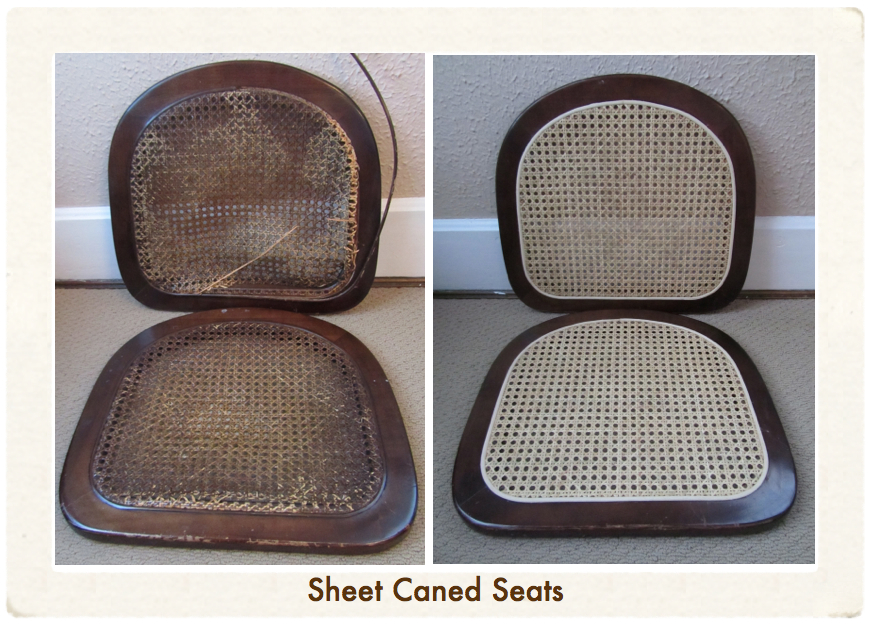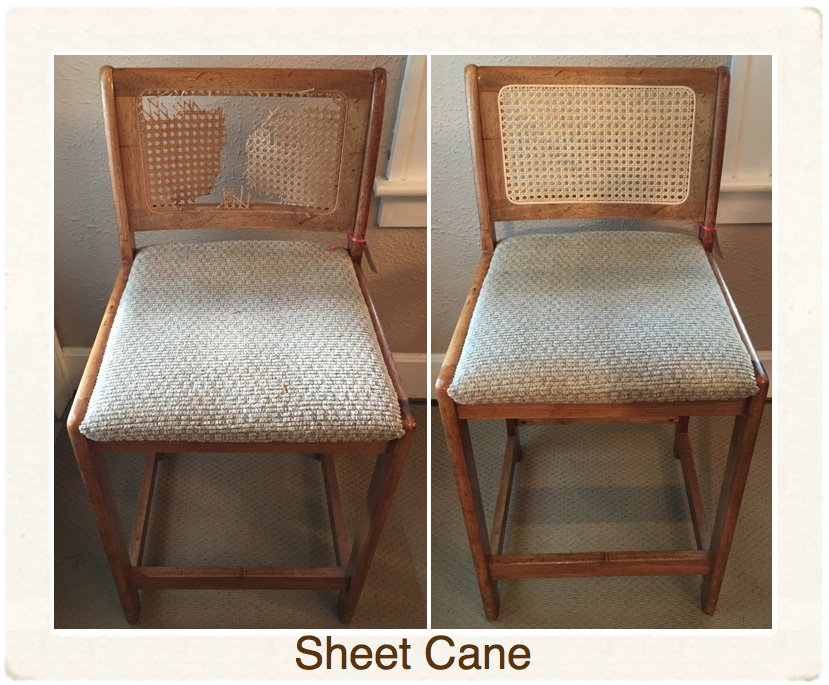What is it? Like the name suggests, the cane comes pre-woven in sheets. It is also called "pressed" cane because of the way it is installed- by pressing the sheet of cane into the grove in the wood. While the sheet cane is pre-woven, it still has its share of process. The old cane and spline must be extracted by hand tools and the grove thoroughly cleaned before the new cane is stretched, attached, and secured.
MATERIAL: Cane is produced from the peeled-off bark of rattan which naturally grows in Southeast Asia. The strips of bark are cut into cane strips of uniform width and depth, referred to as peel. These strips are then woven together in a continuous sheet of cane- the horizontal and vertical strips by antique weaving machines and diagonal strips by hand.
COLOR: When the cane is brand new it is a light blond color and will darken with age and oxidation to a honey color. Information on color matching cane CLICK HERE
How do I know if my chair has Sheet Caning? CLICK HERE
MATERIAL: Cane is produced from the peeled-off bark of rattan which naturally grows in Southeast Asia. The strips of bark are cut into cane strips of uniform width and depth, referred to as peel. These strips are then woven together in a continuous sheet of cane- the horizontal and vertical strips by antique weaving machines and diagonal strips by hand.
COLOR: When the cane is brand new it is a light blond color and will darken with age and oxidation to a honey color. Information on color matching cane CLICK HERE
How do I know if my chair has Sheet Caning? CLICK HERE
Sheet Caning Weaves and Options
Chairs that are made to accept sheets of cane offer the owner many options for sizes and patterns of cane that are not available with hand cane chairs. Finished samples are available to choose from when dropping off your chair.
Traditional Caning Pattern
|
The traditional caning pattern is made to mimic the traditional hand caning pattern. With this weave there are 6 weave/cane size options to choose from. Each is priced individually by size of weave and size of panel that needs replacement. Standard size is best bet for seat strength- there is a reason it is the most popular weave!
|
Close Weave
|
Close Weave caning has traditionally been used on Victorian Era and Heywood Wakefield wicker furniture where the seat and/or back portion is made of wood with a close weave sheet cane panel. This allows the seat to blend well with the ornate wicker and also makes it easy to replace with fresh cane without involving the weave of the whole chair. Best used in round or ovoid seats. Size options available: 2
|
Swedish / Danish Modern
|
The Swedish, or Danish, Modern weave is a more modern and angular option for sheet cane panels. Not suggested for usage in seats as the pattern is more sparse and open than the traditional caning patterns, thus less supportive for the weight of the sitter.
Size options available: 2 |
Paper Cane
|
Paper Cane is available in the Traditional, Swedish Modern, and Radio Net patterns. Paper cane is synthetic, comparable in strength to natural cane, but is not for use on seats. It has a finished front and back and is mostly used on large chair arm and back panels and barrel chairs where both sides of the cane is exposed. Unlike natural cane, Paper Cane will not darken with age. Any color variation must come from post installation finishes.
|
Wood Rail Attachment /
|
A Selection of Sheet Cane Before + Afters:
Breuer's "Cesca" and Cesca-like
Marcel Breuer was Bauhaus trained and designed the Cesca chair in 1928. This is a very important chair in the history of both furniture and modern design. These chairs are widely loved, used for lifetimes, and handed down. They come in beech, brown, and piano black and are still produced today. They are also produced with Hand Caning.
Heywood Wakefield
Regency
Mid-century and modern
Canoe Seats
Canoe seats must be detached from the canoe to brought in for re-caning. This is an excellent time to asses any condition issues of the seat- repairs to the wood and finish should be completed before new cane goes in.
Radiator Covers
Carved Chairs
Barley Twist
Tables
Various Side Chairs
Victorian and turn of the century
Bentwood
Thonet
|
Michael Thonet was the father of bentwood furniture and developed world-wide distribution unheard of before. The pieces could be produced in Austria, shipped, and assembled at their final destination anywhere in the world. The designs were revolutionary- first produced in 1853 and Thonet factories still in production today. Authentic Thonet pieces are well marked- usually stamped right into the wood and paper labels if they have stayed intact . Many companies have copied and used his techniques- even today. |
Hitchcock
Baker Furniture
Floating Medallions
Office, Desk Chairs
Barrel and multi-panel
Arm Chairs
Chinese, Chinese Horseshoe Back
Pressed Back
Dining sets
Lincoln Rockers
Rockers
Vanity and piano benches
Bar / Counter Stools
Emza's Chair Caning Columbus, Ohio. By appointment at: (614)906-4363

